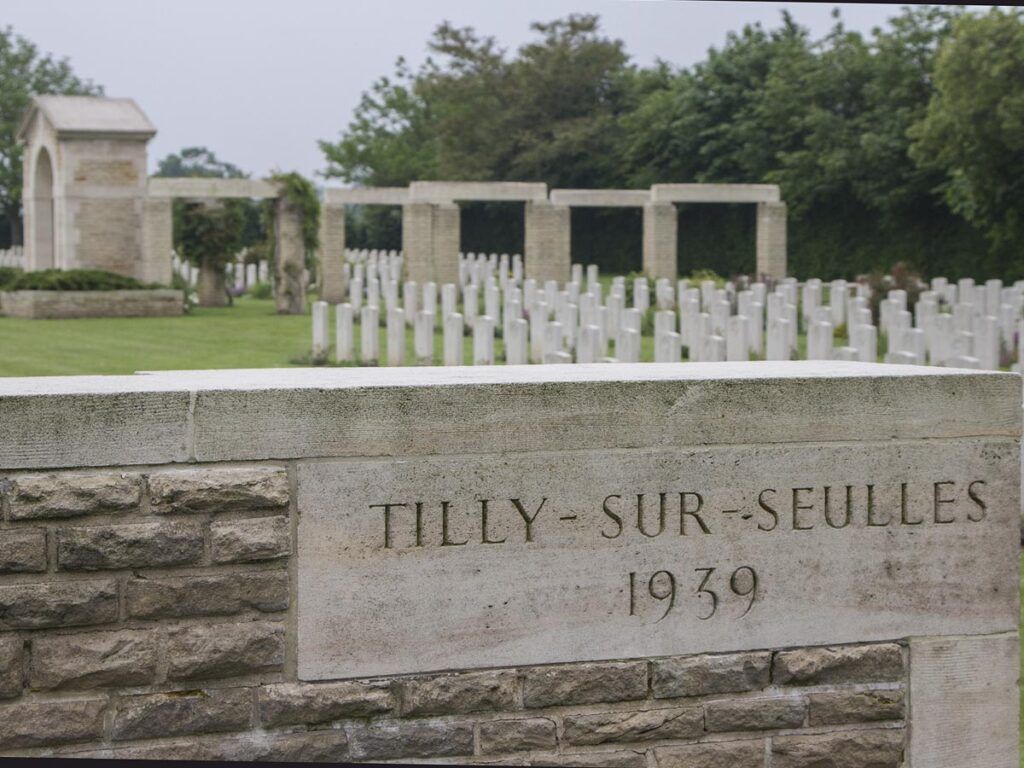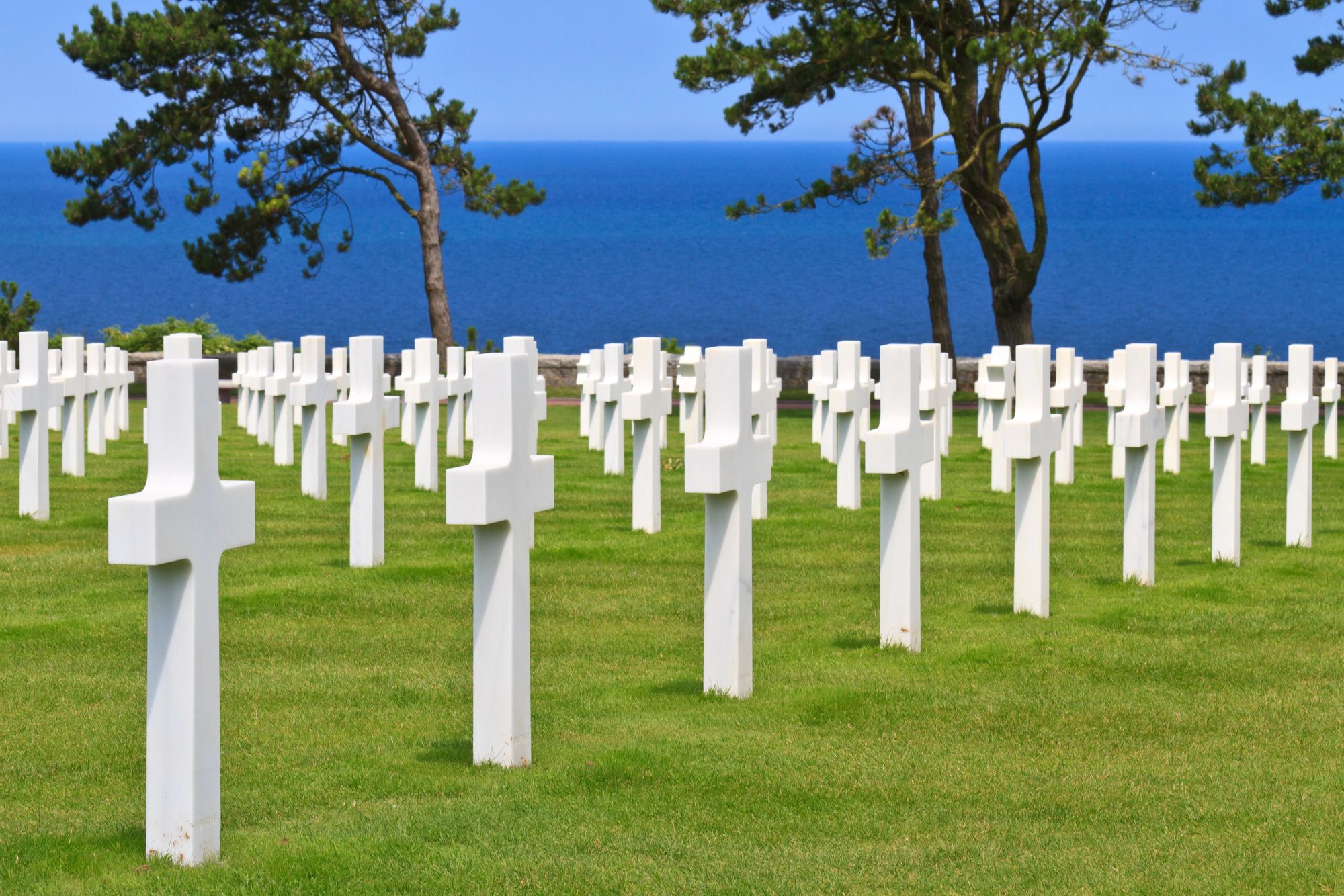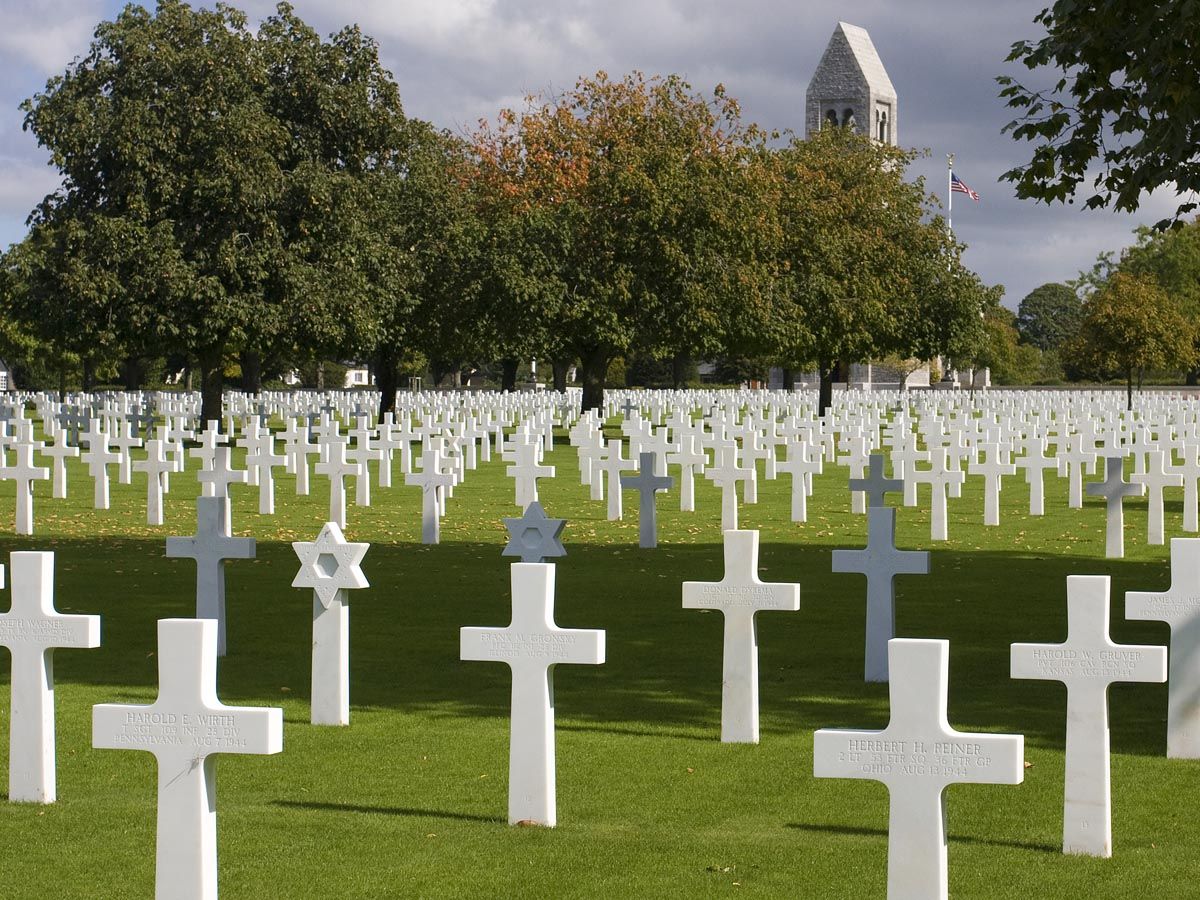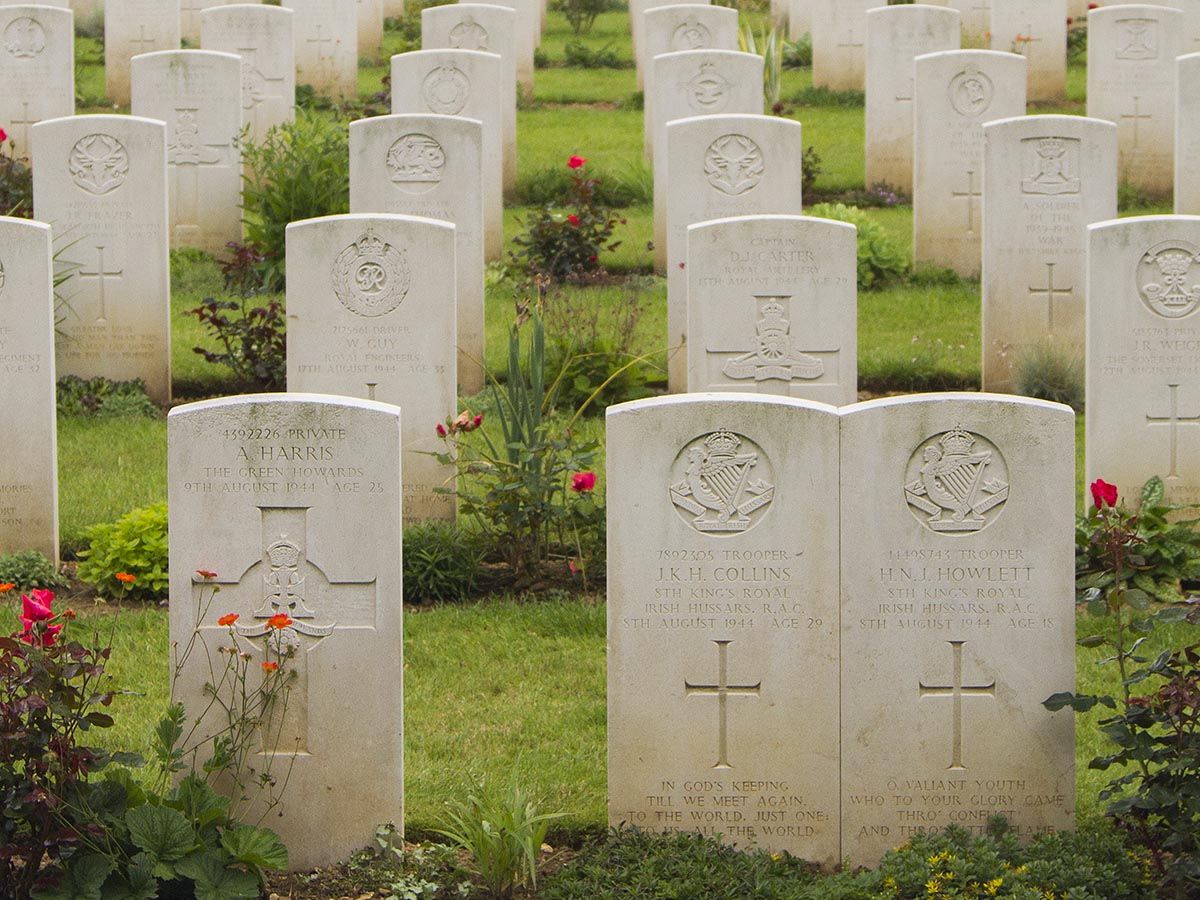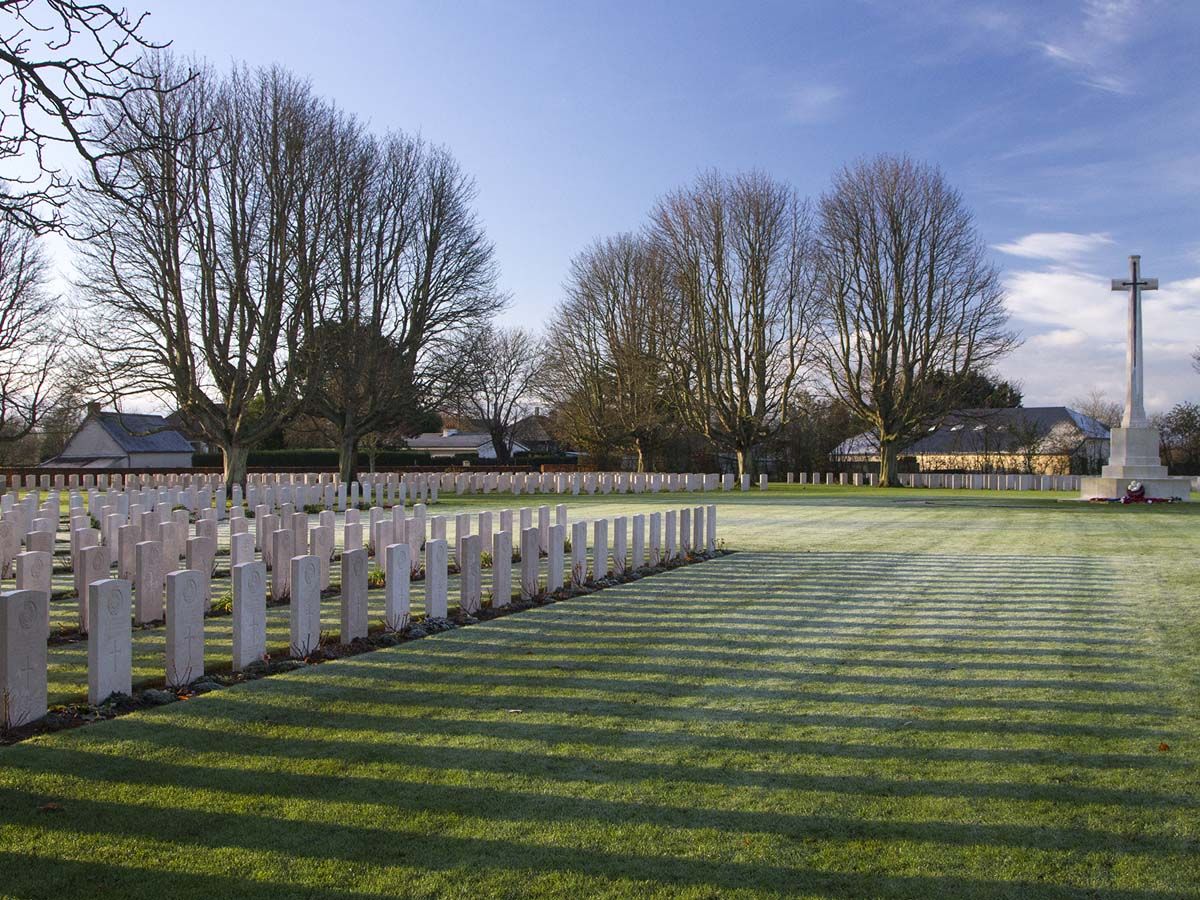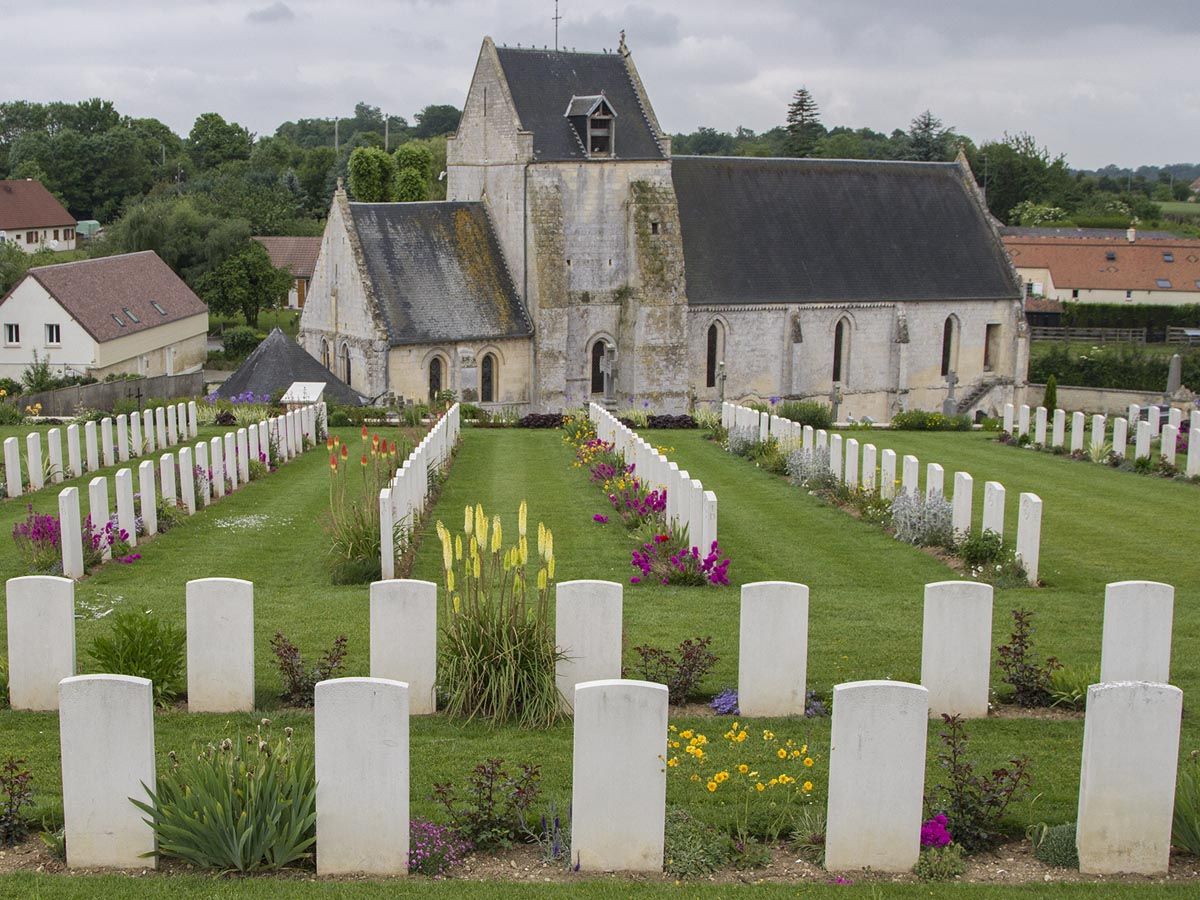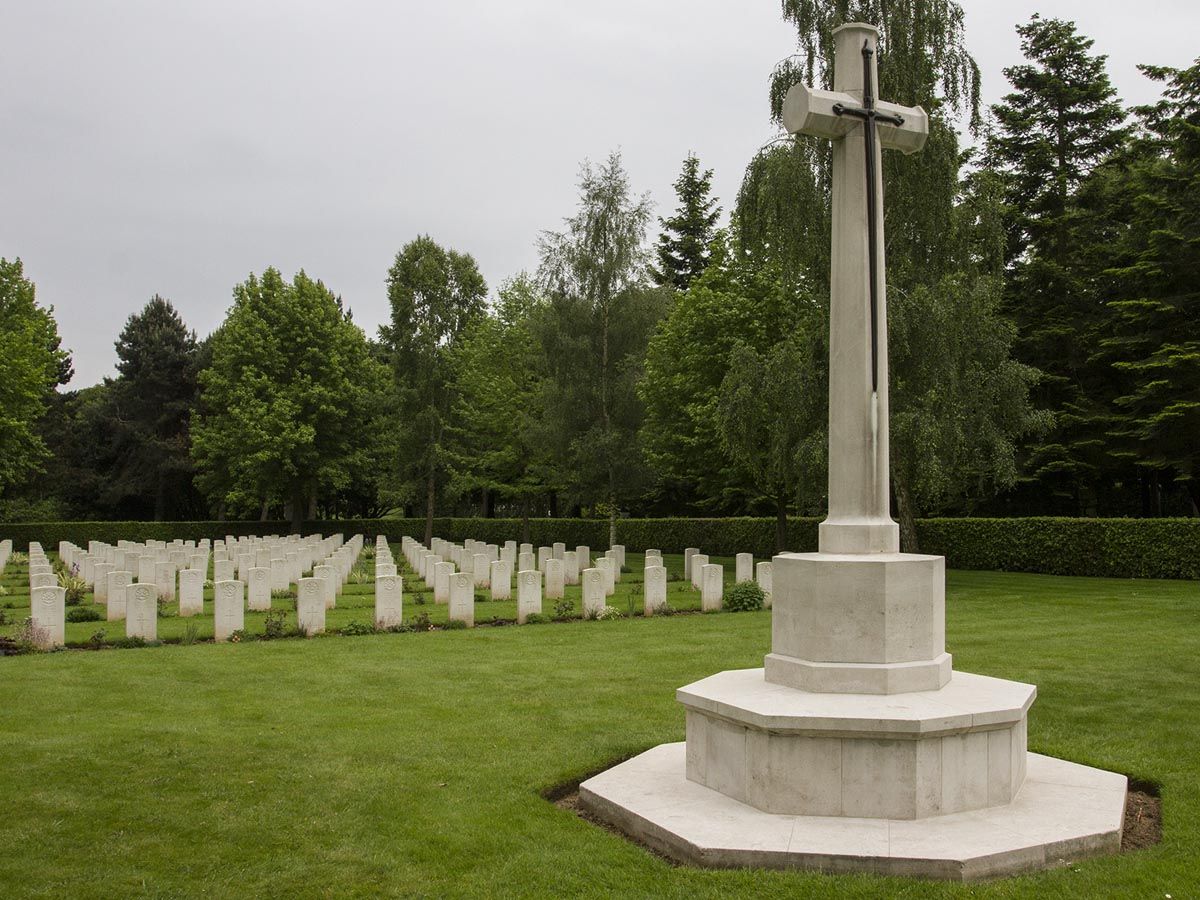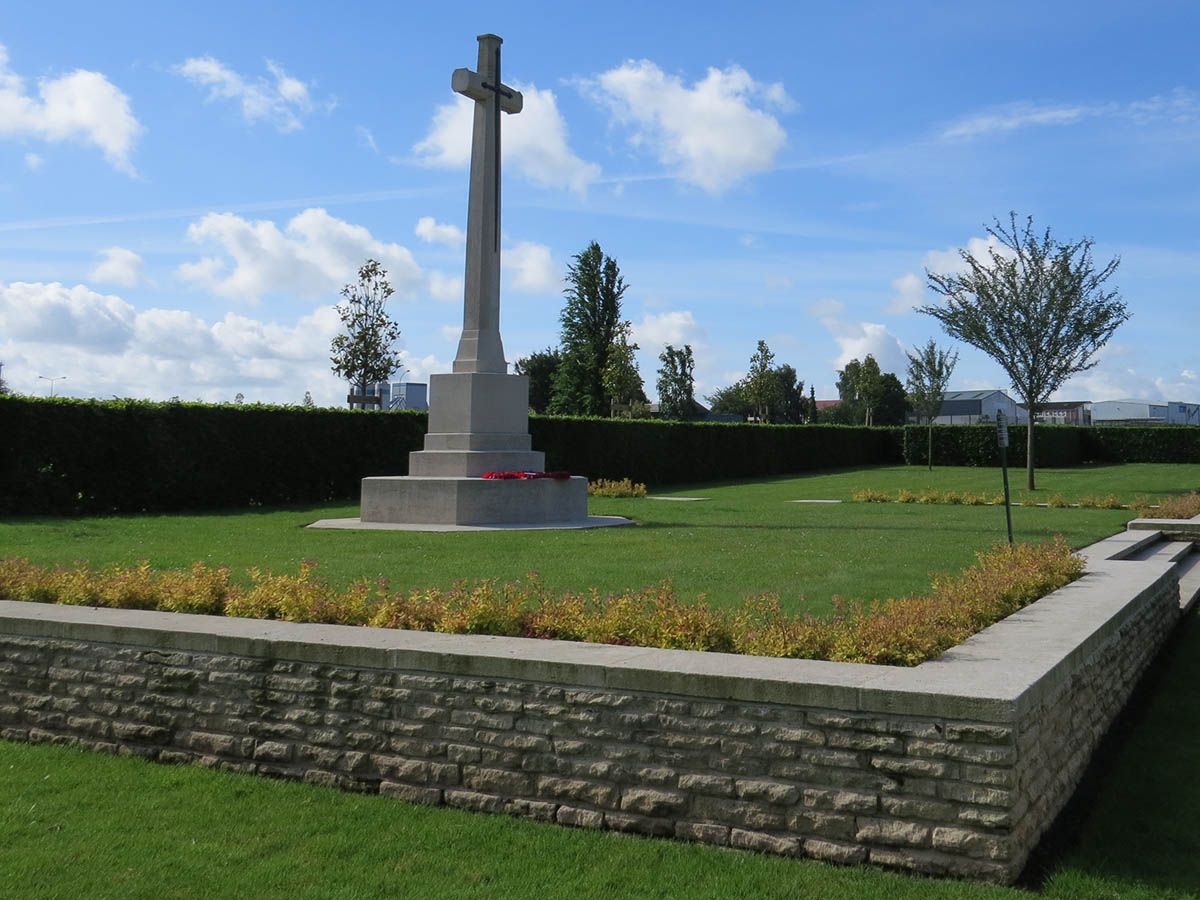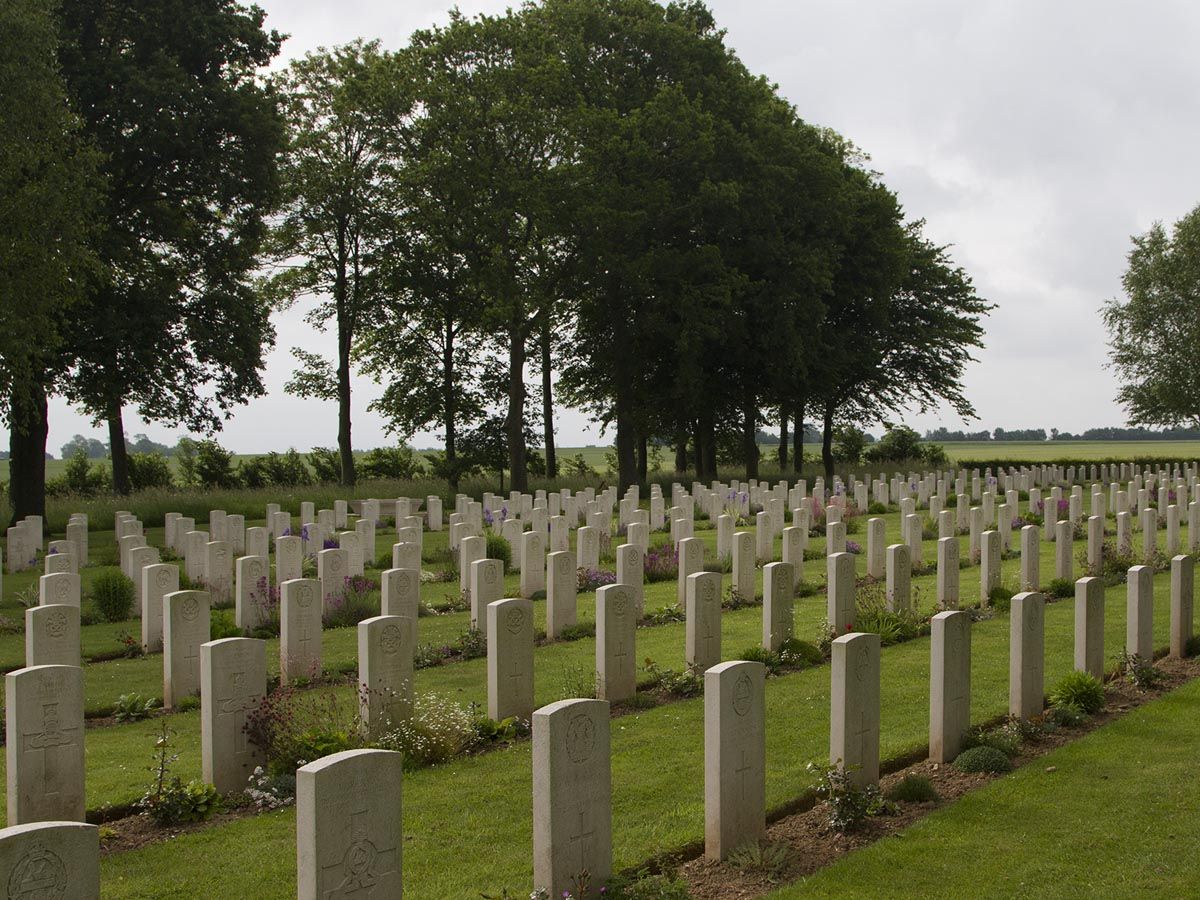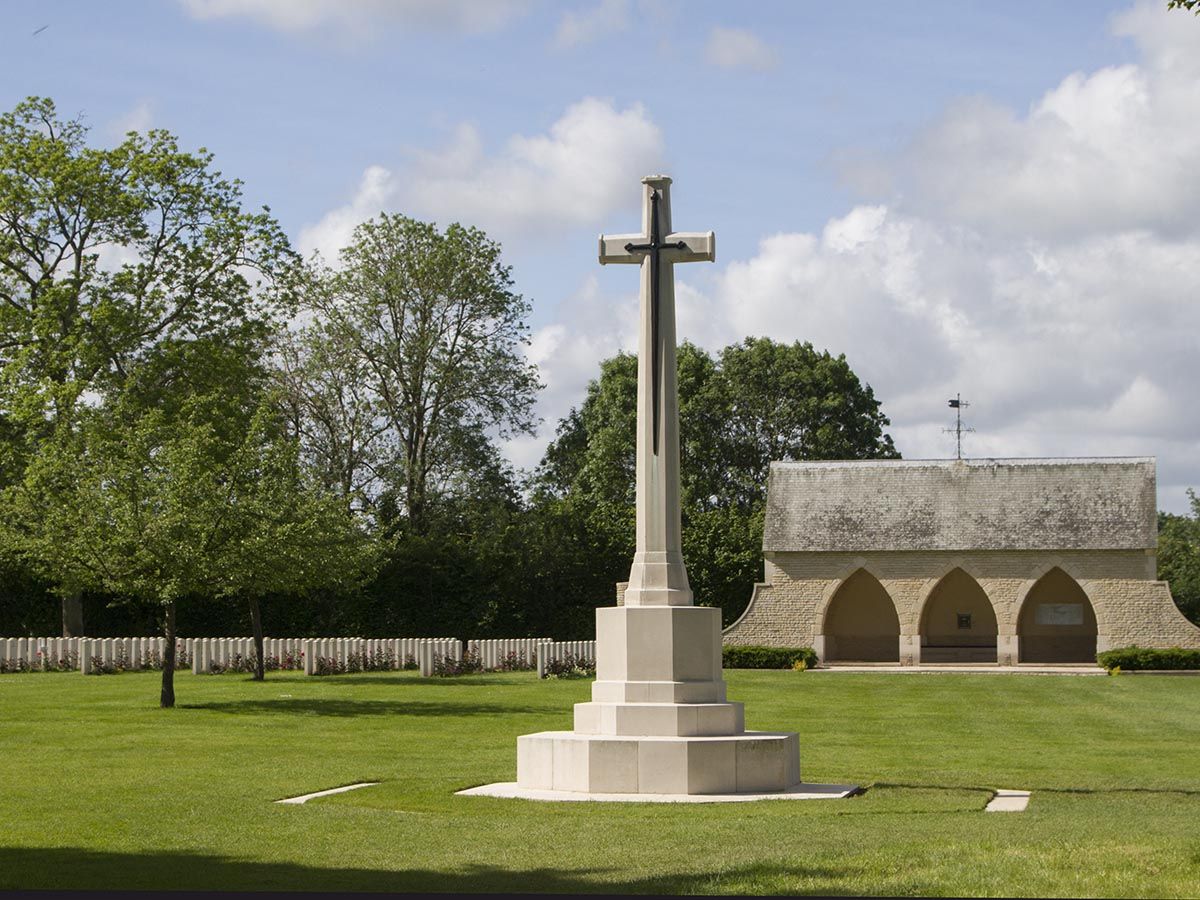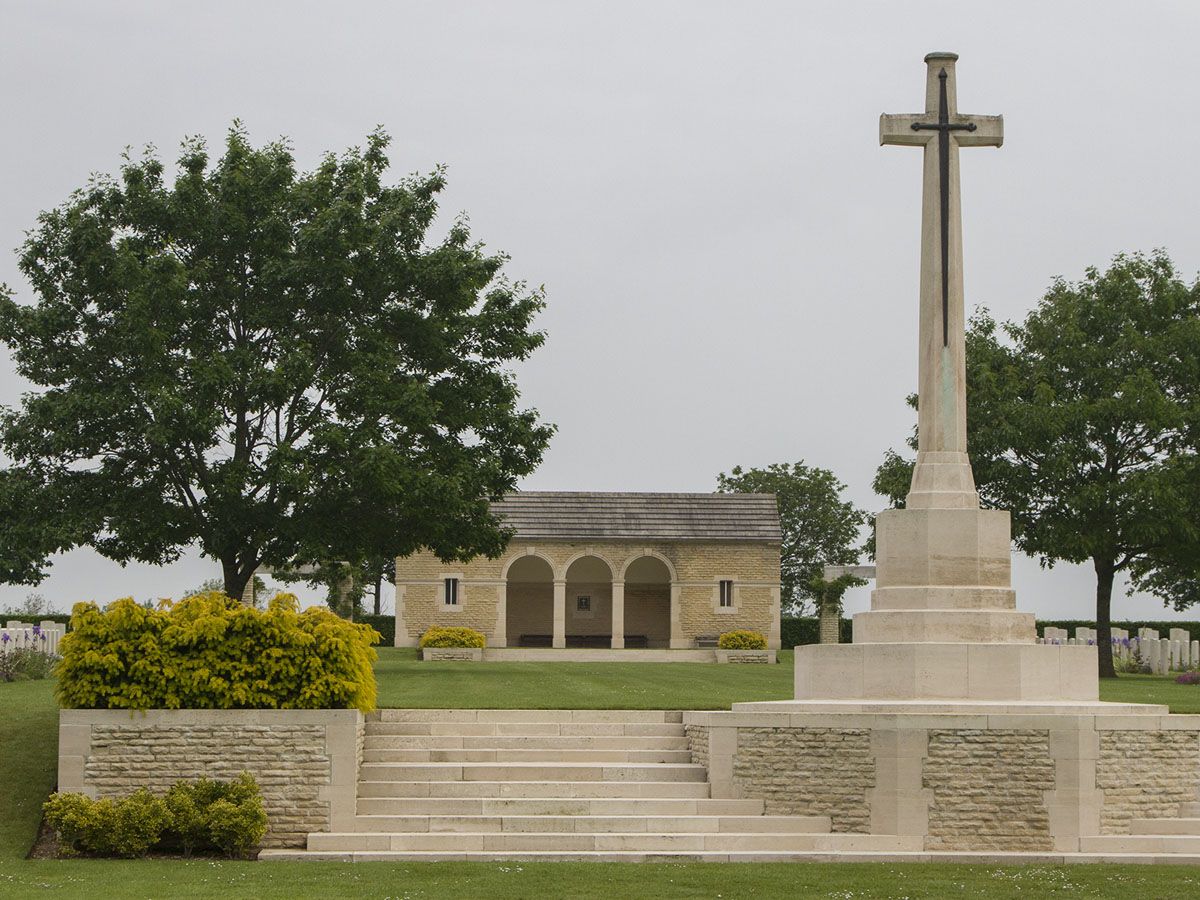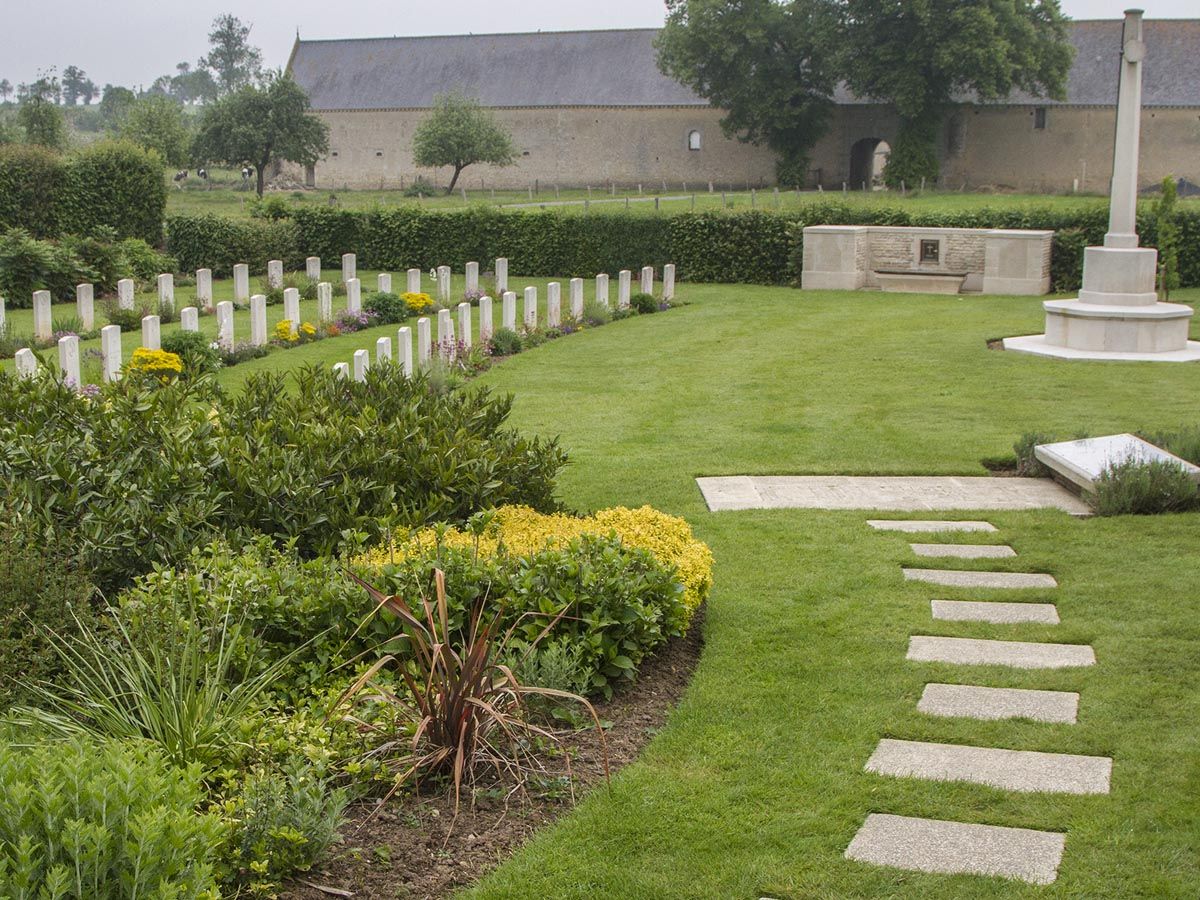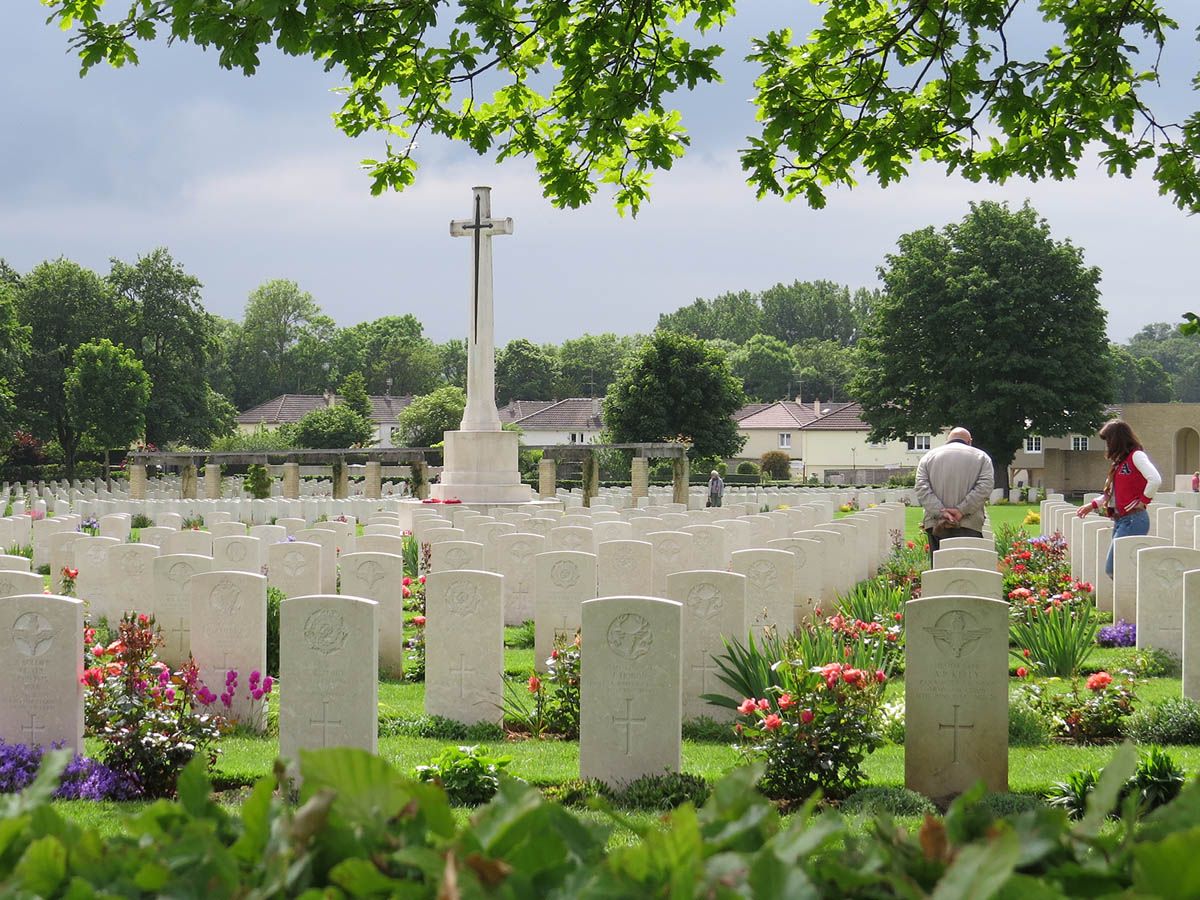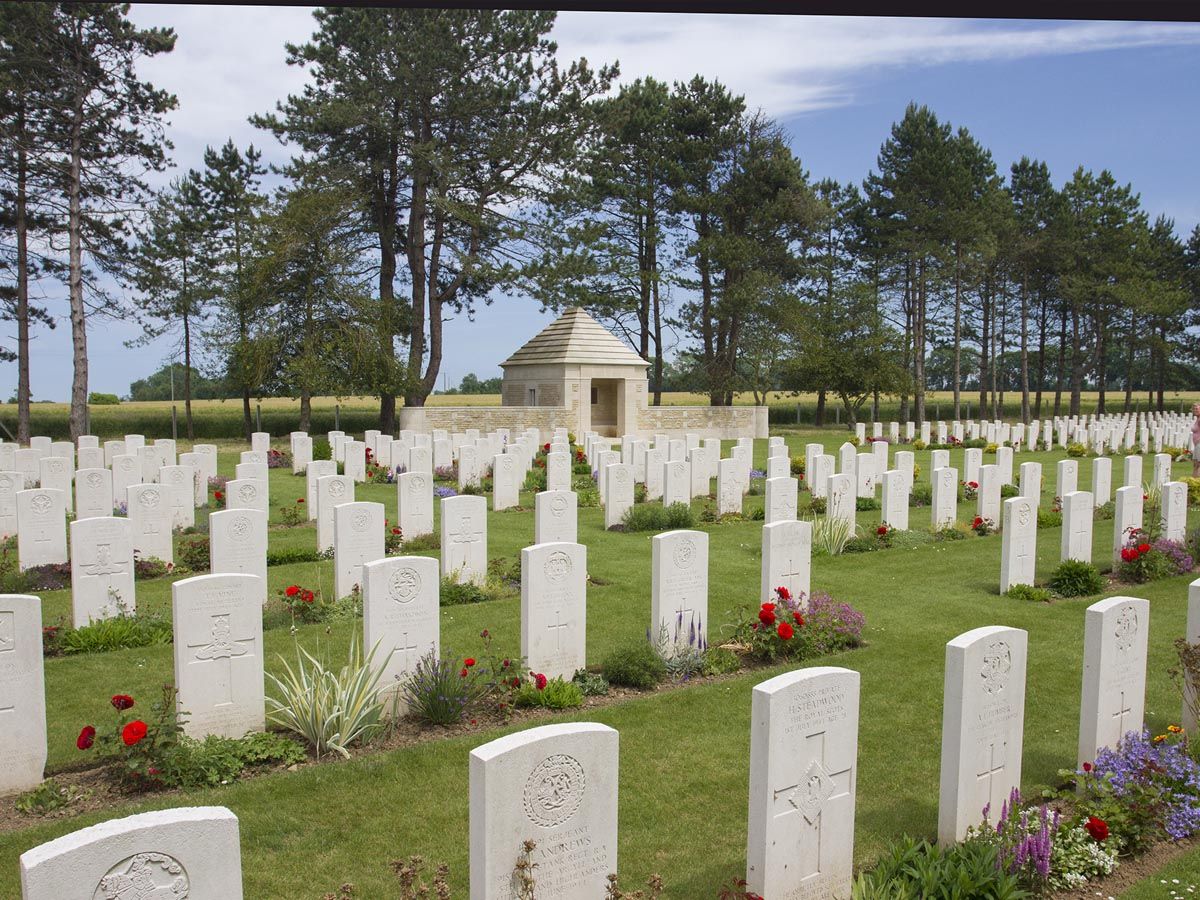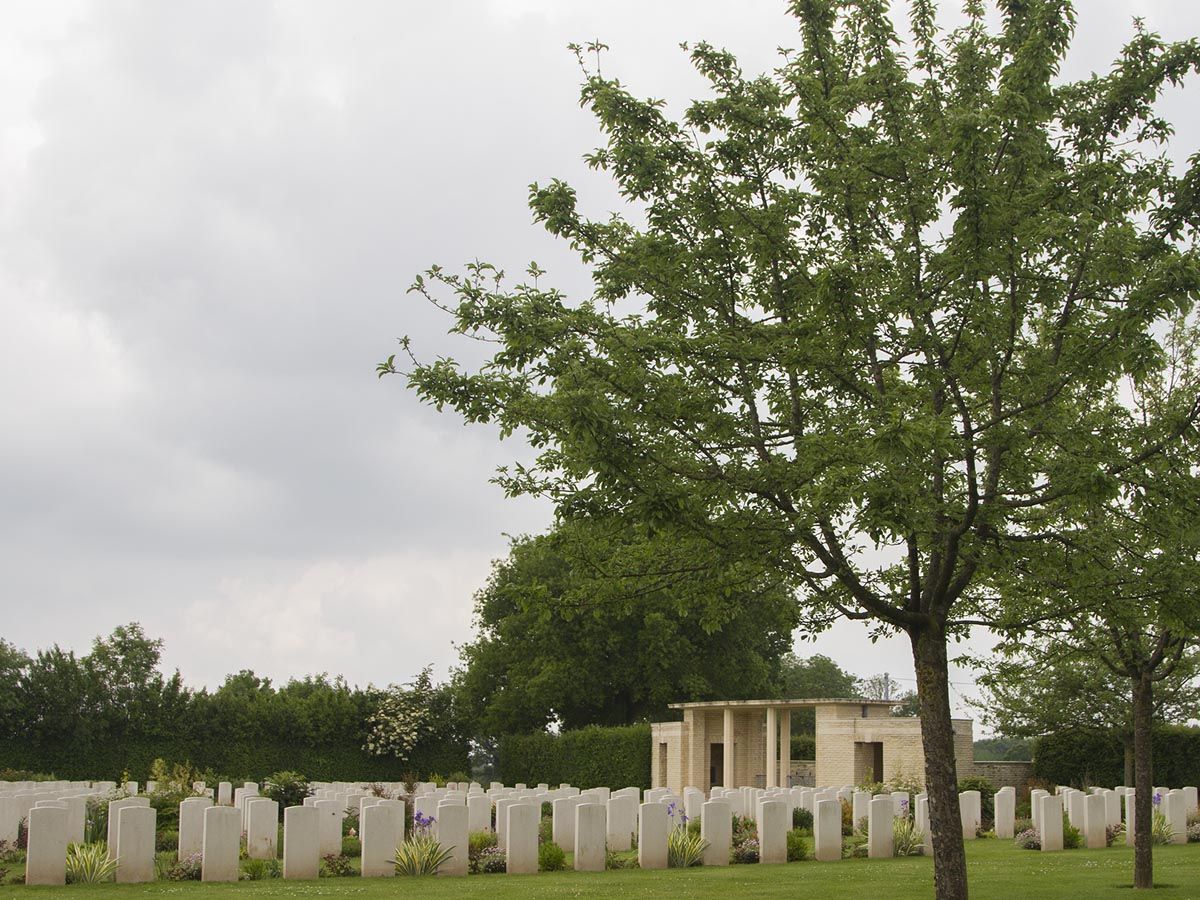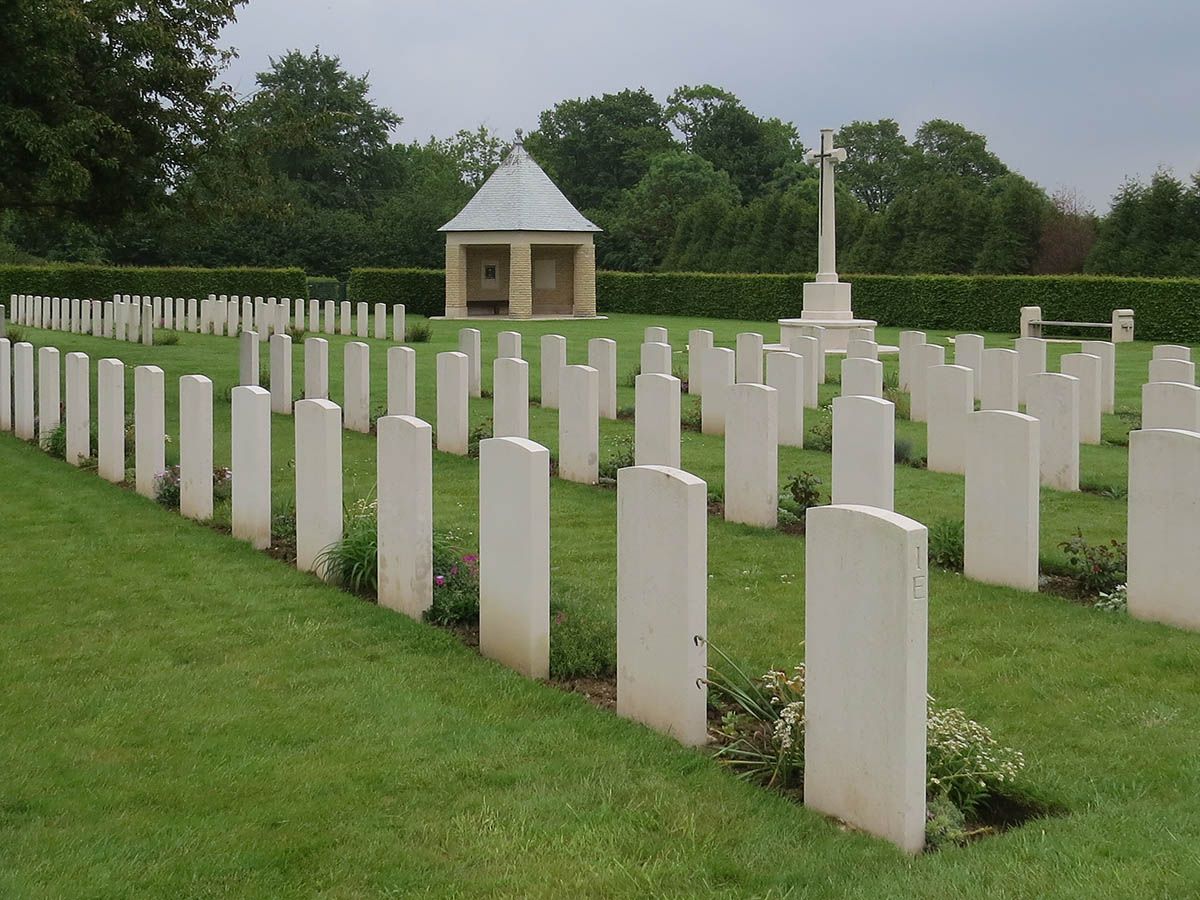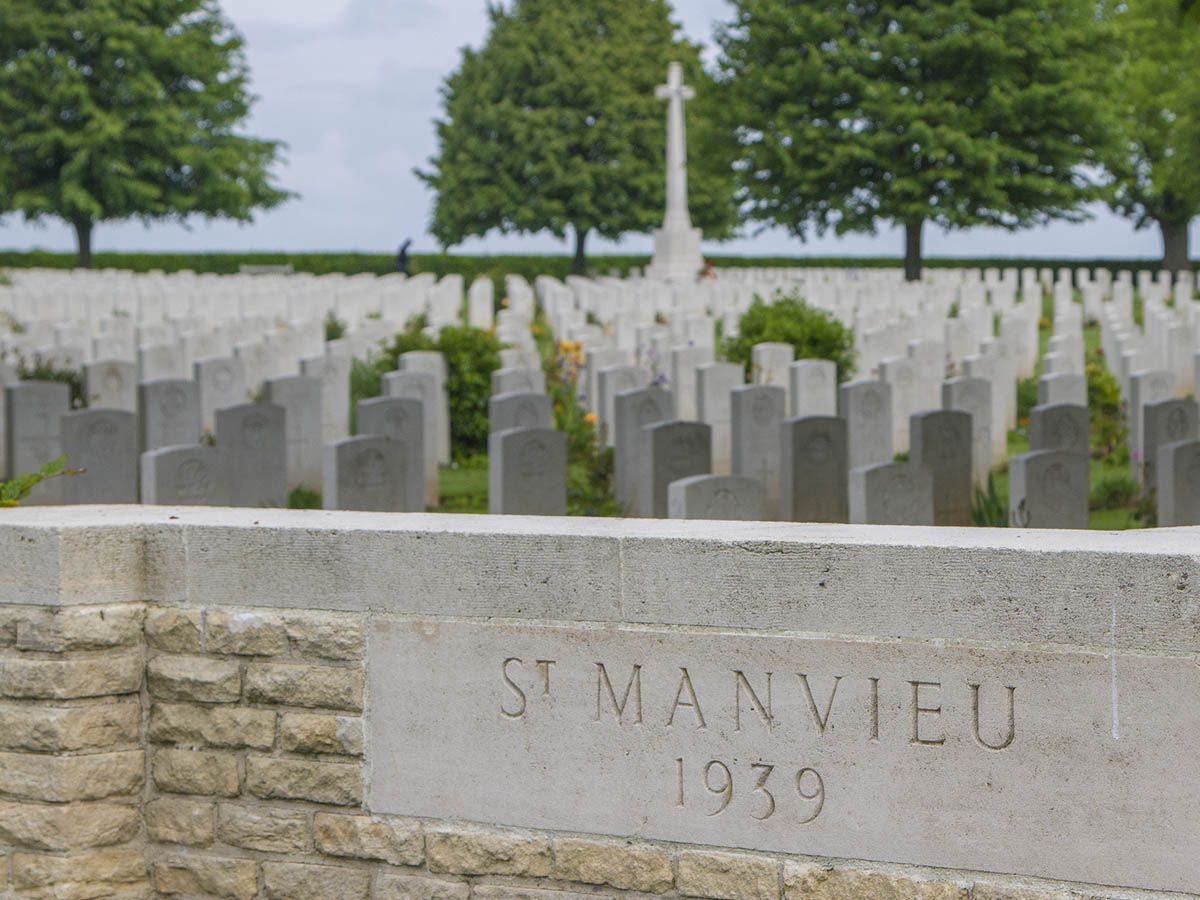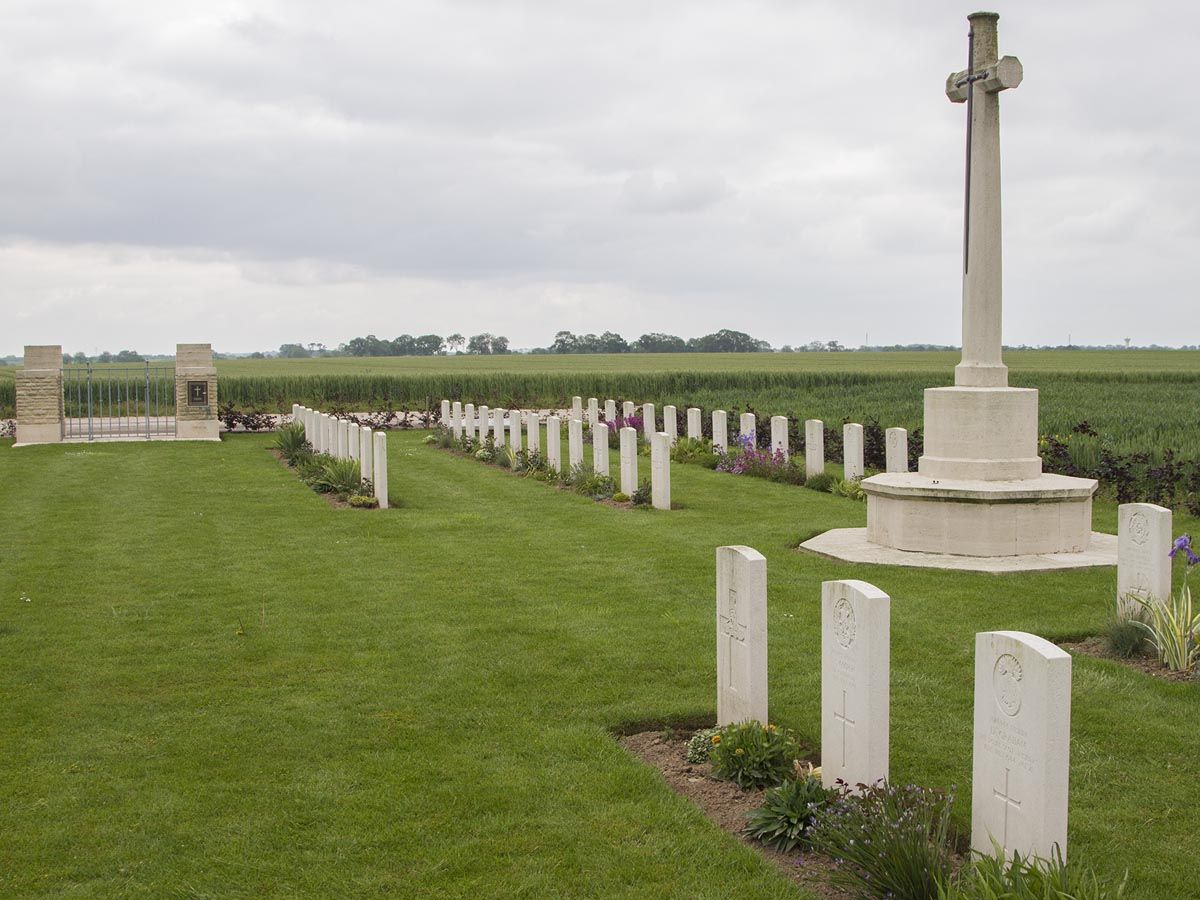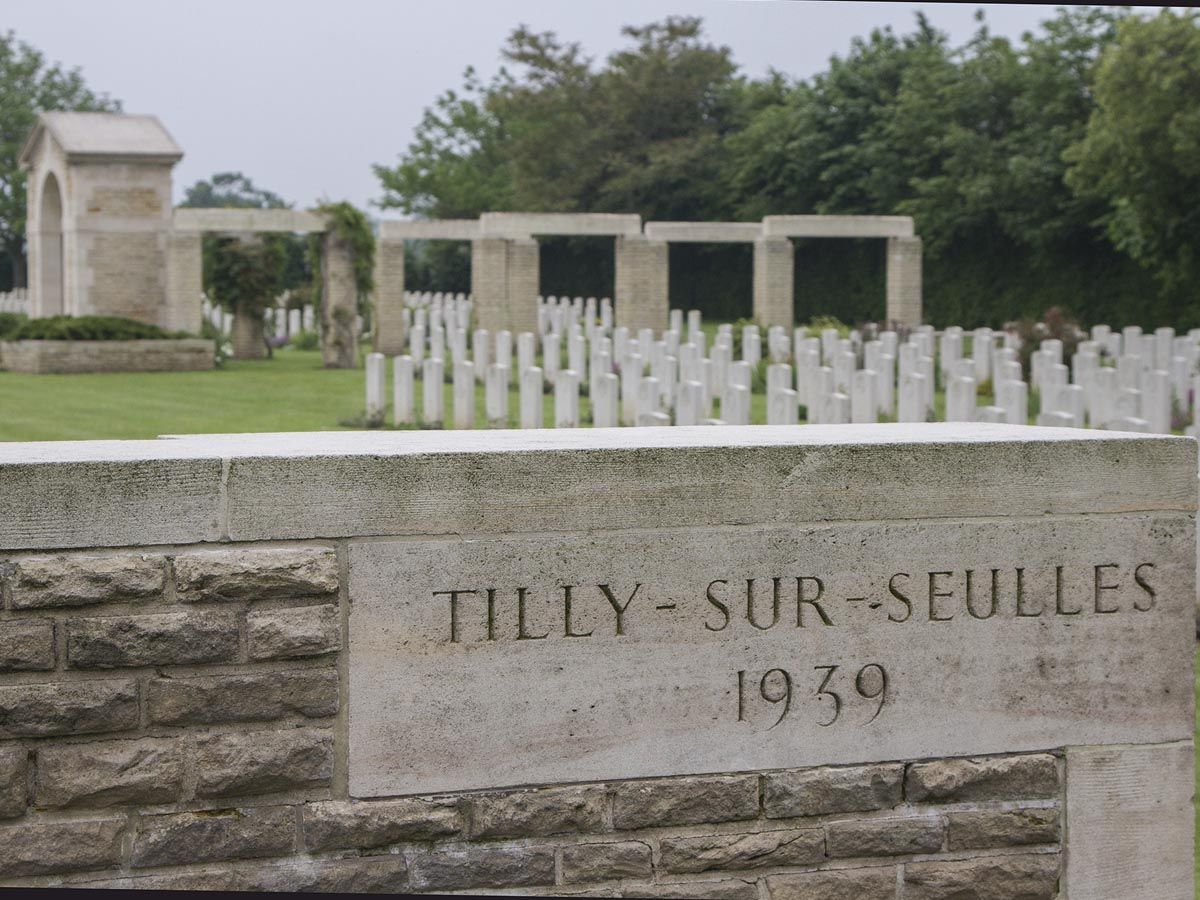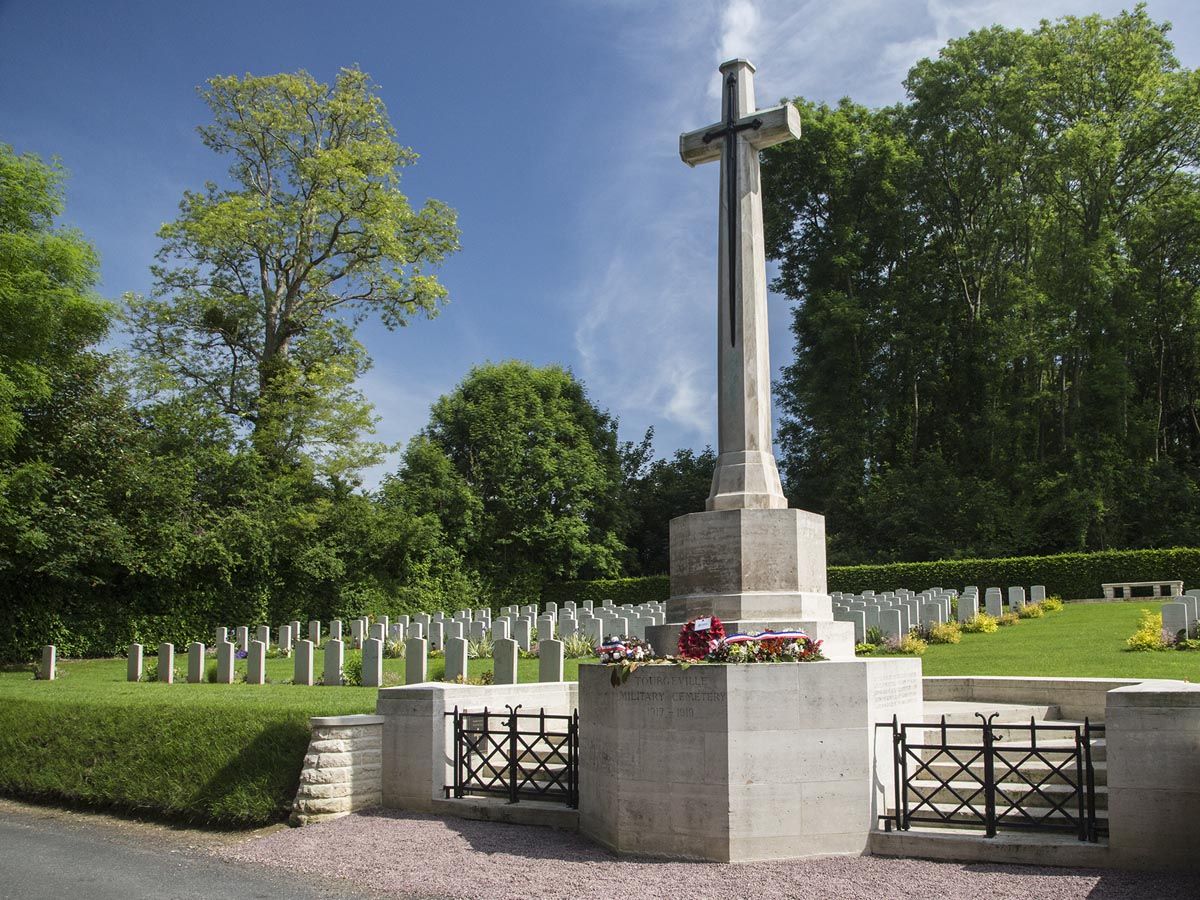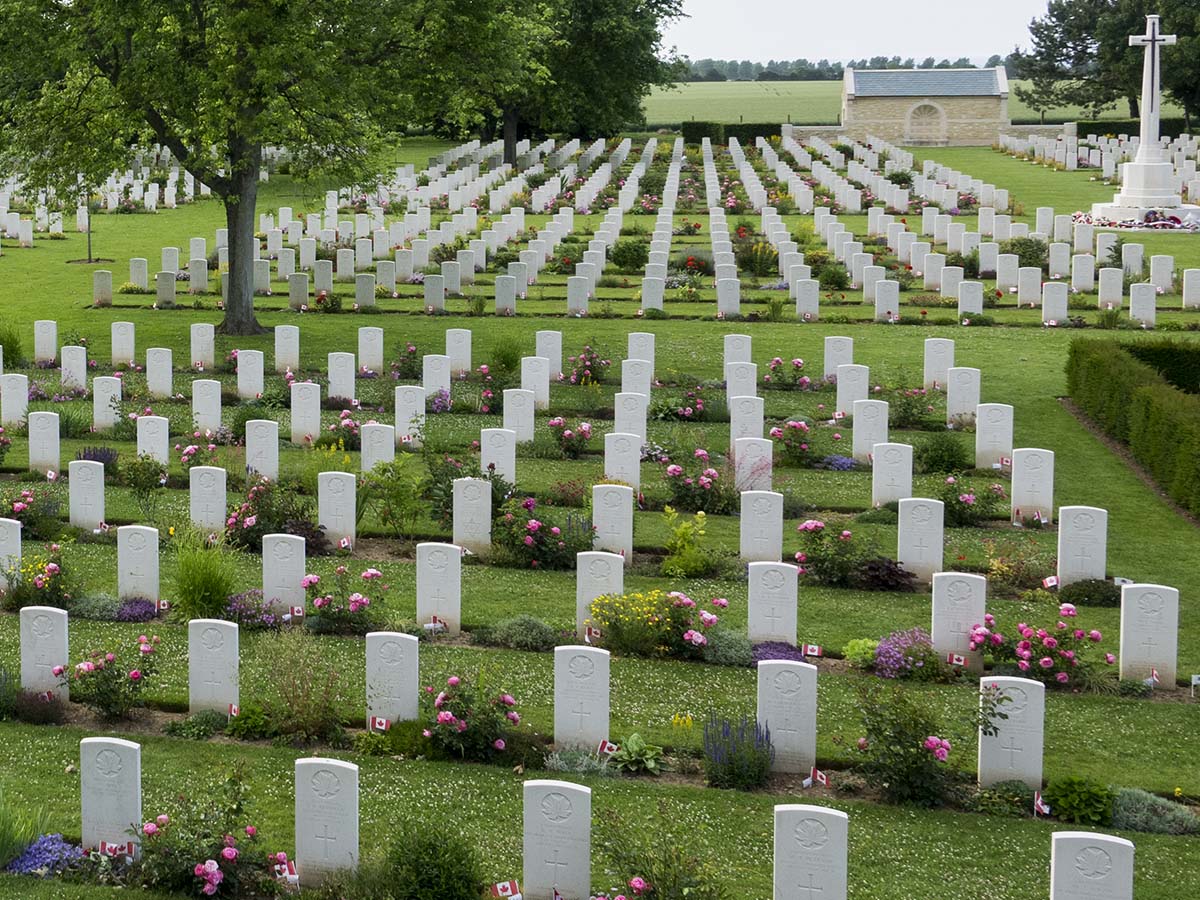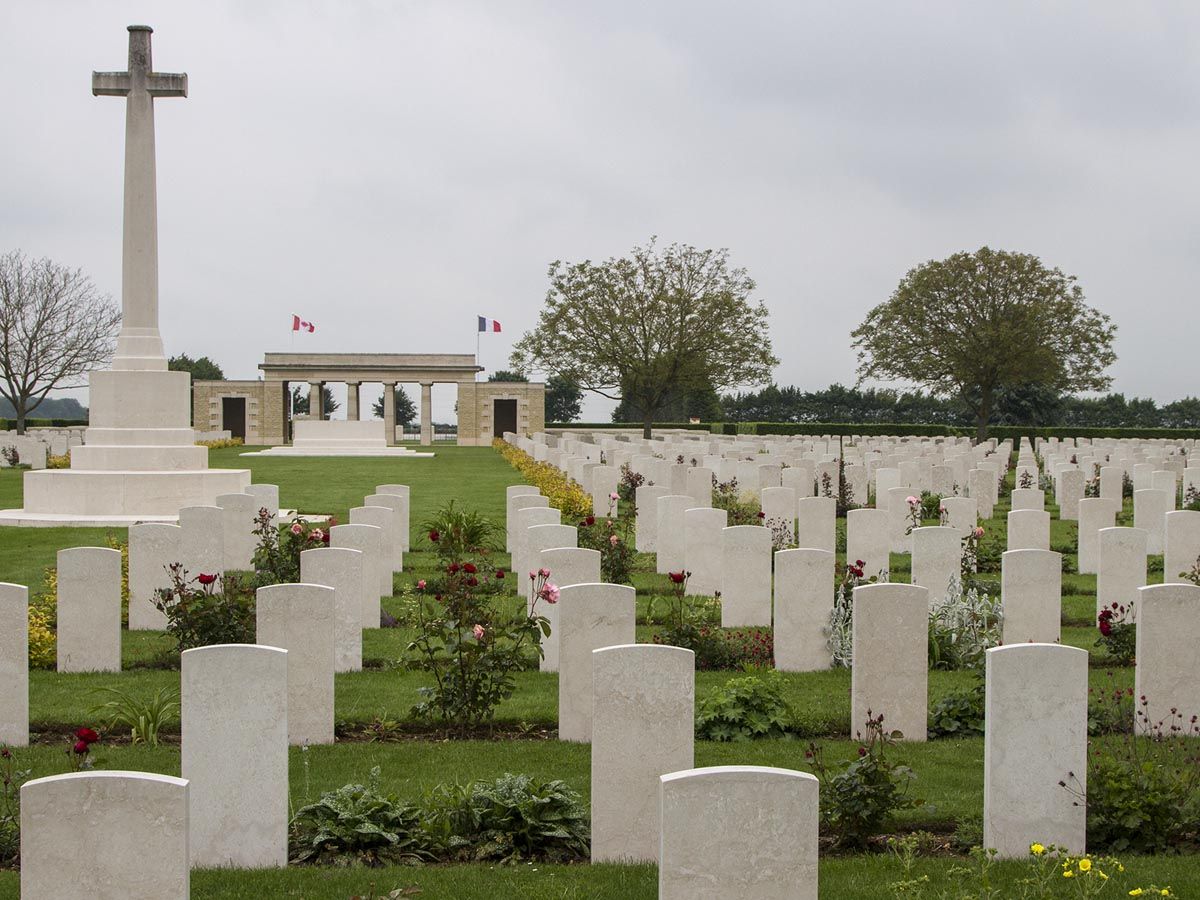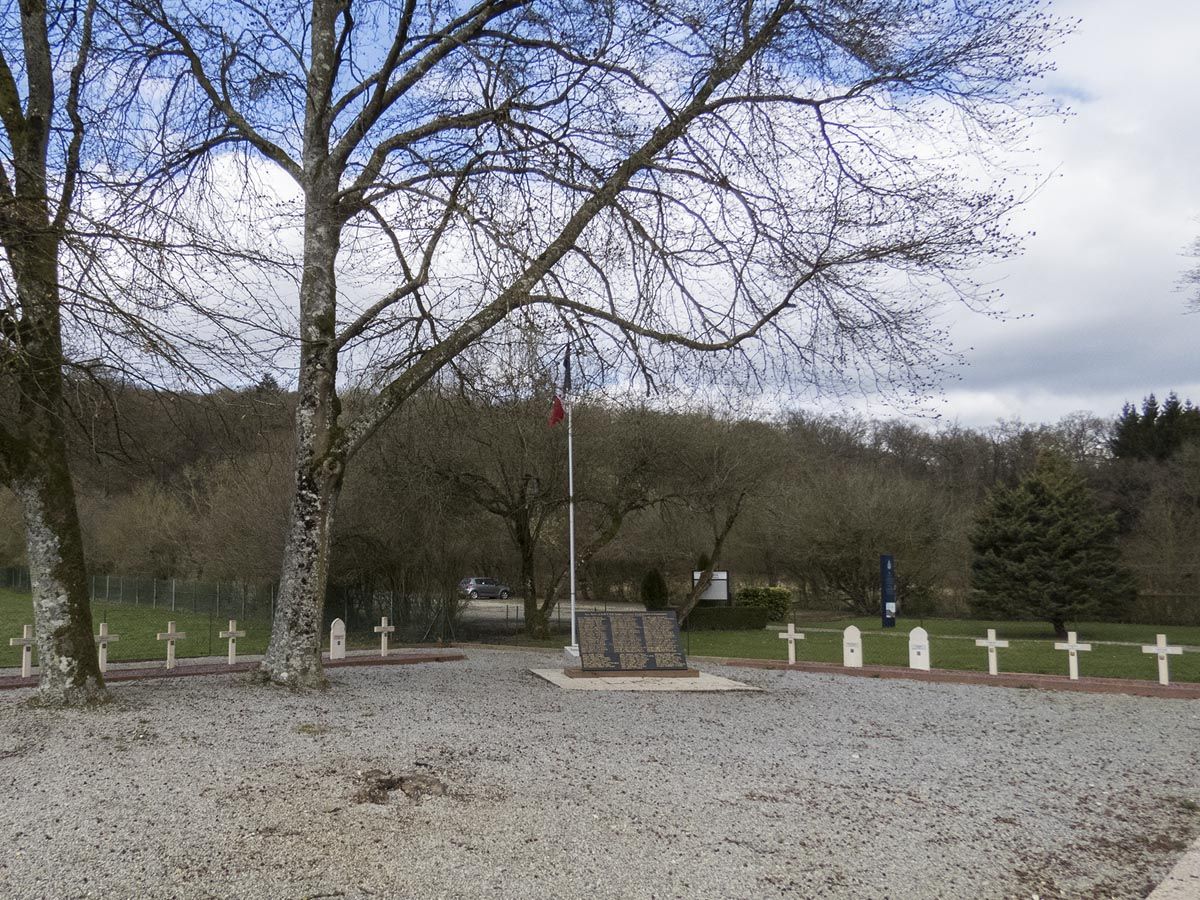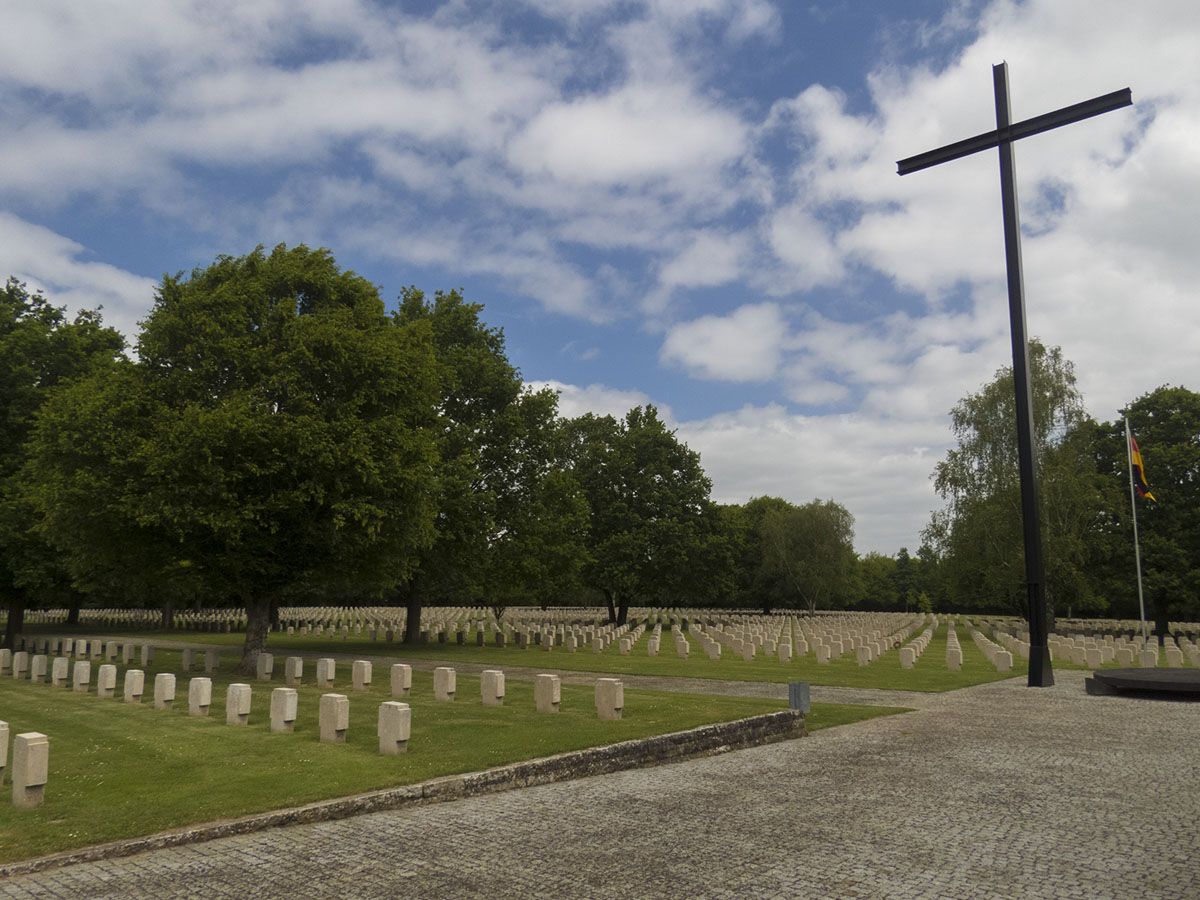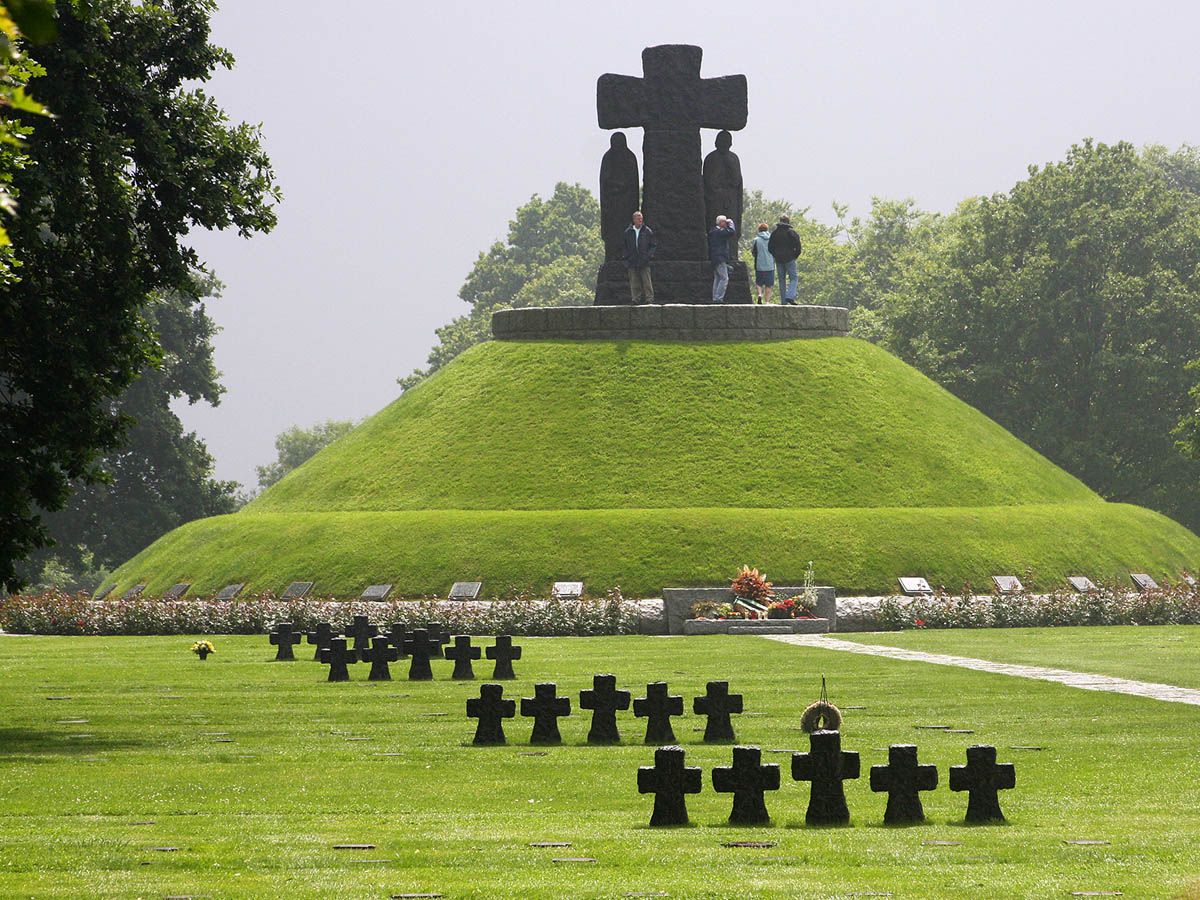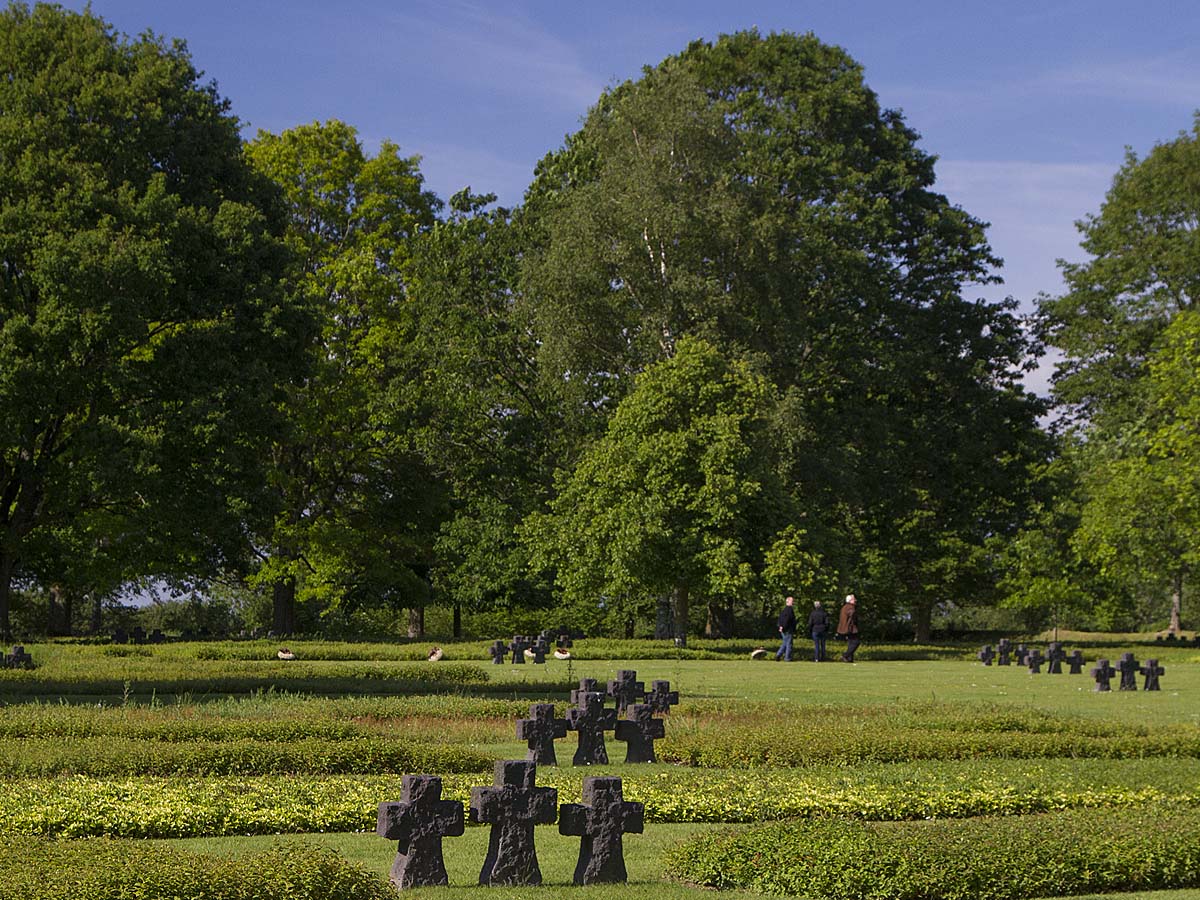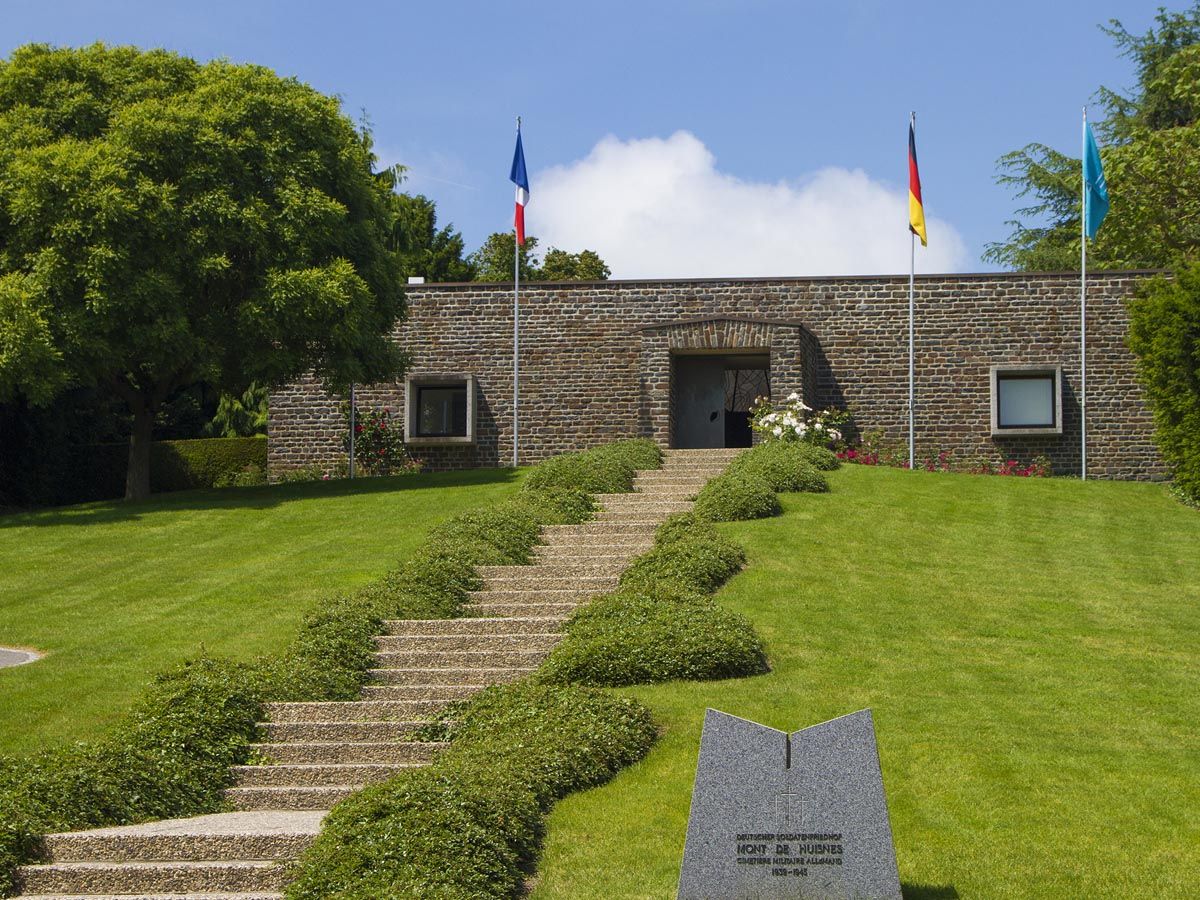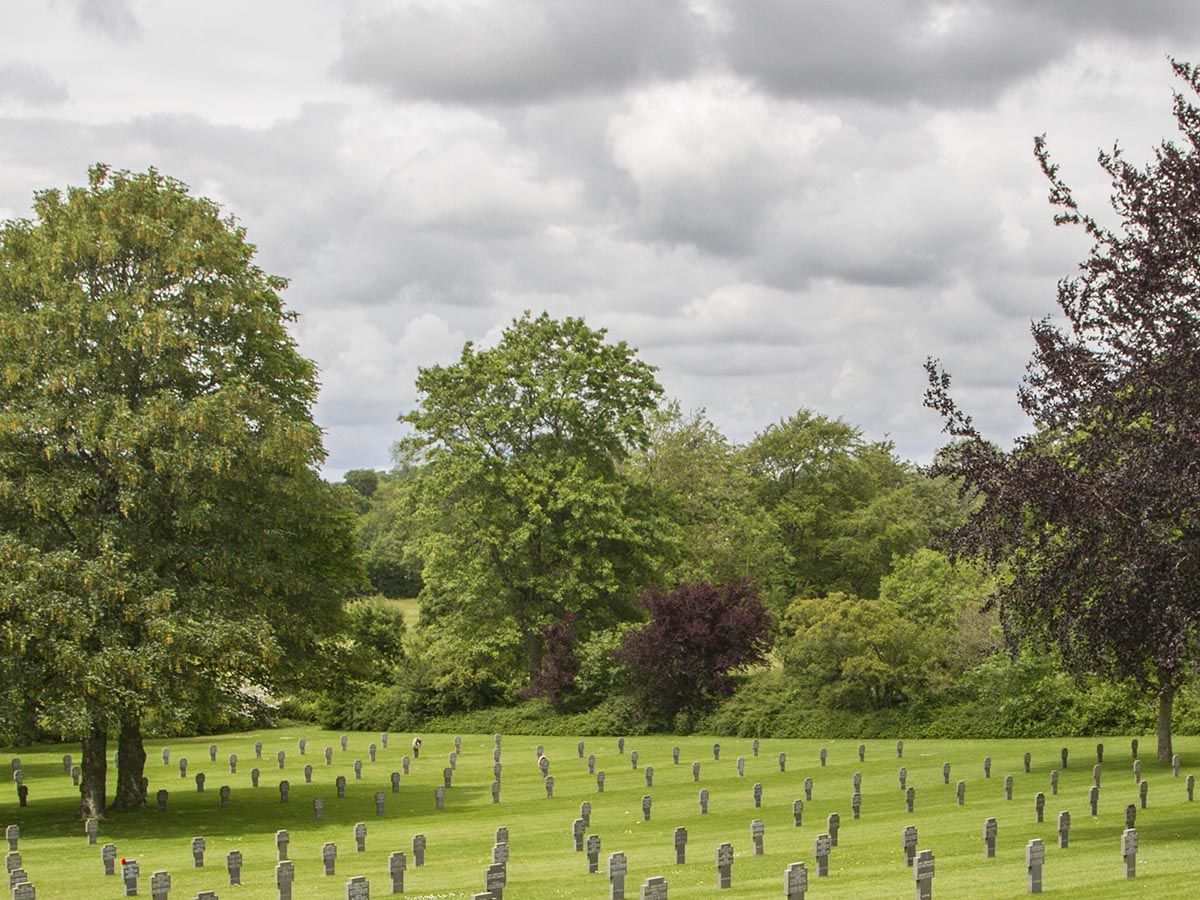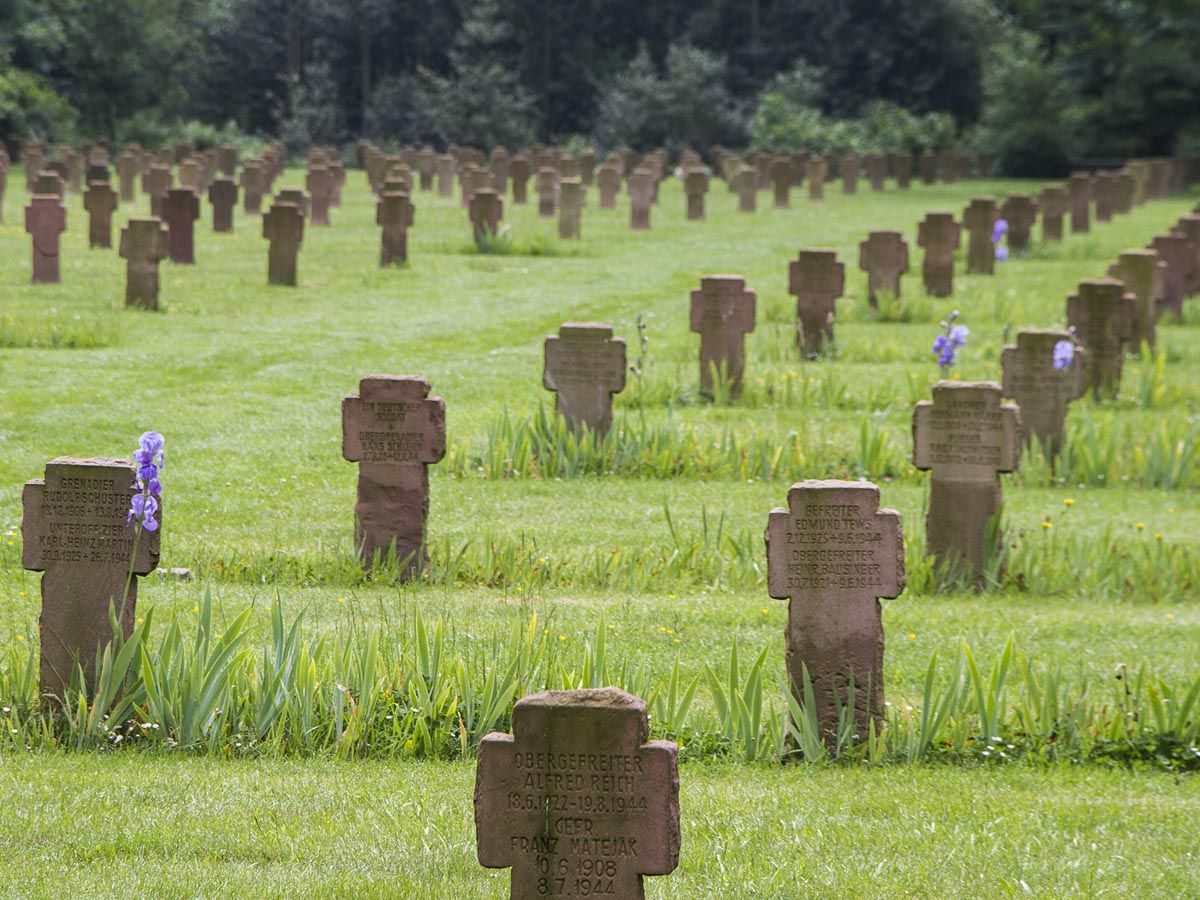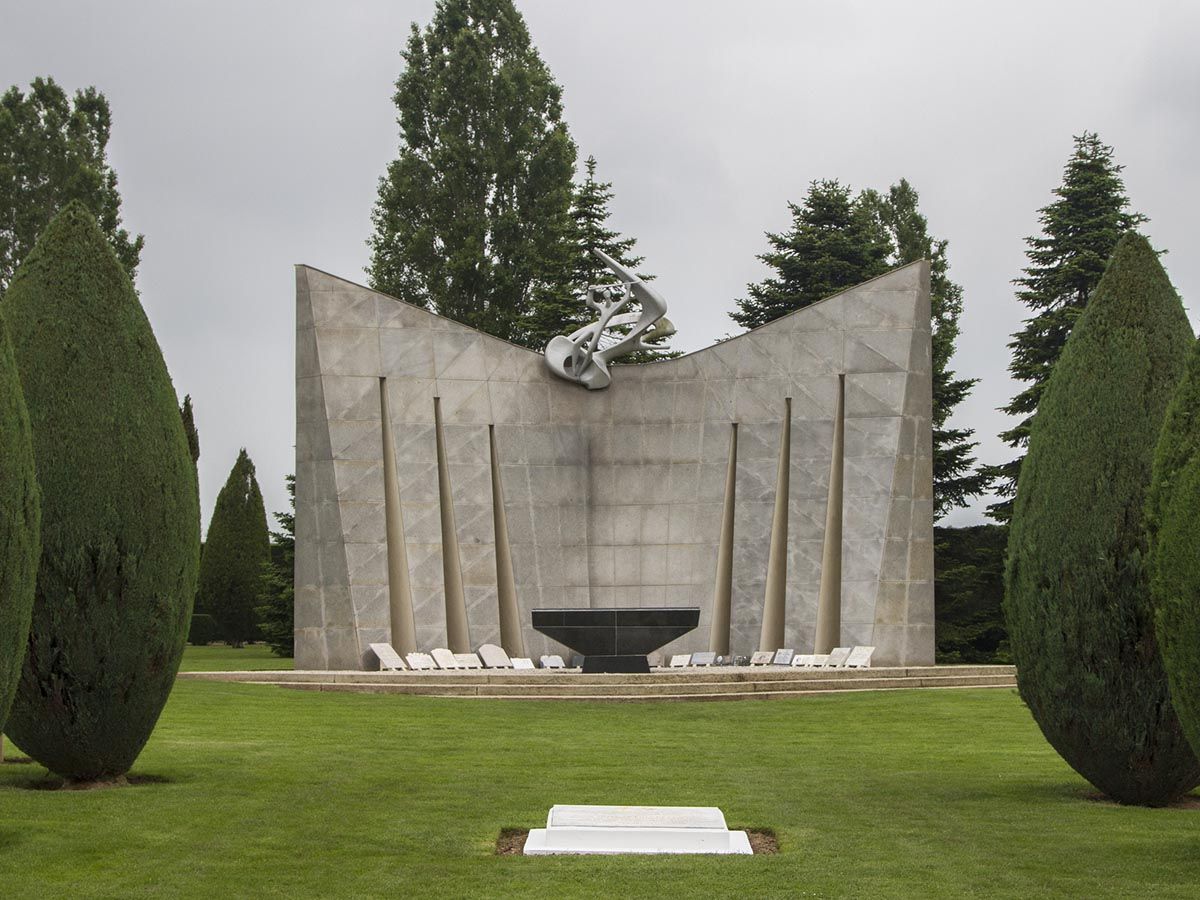Nestled in the picturesque Normandy countryside, Tilly-sur-Seulles War Cemetery stands as a solemn reminder of the fierce battles that raged in this area following the D-Day landings. Just 12 kilometers southeast of Bayeux, this beautifully maintained cemetery contains 1,222 graves of fallen soldiers from World War II. The cemetery honors the memory of 986 British, 2 New Zealand, 1 Australian, 1 Canadian, and 232 German soldiers who made the ultimate sacrifice during the Battle of Normandy.
As you wander through the immaculate grounds, you’ll find yourself moved by the neat rows of headstones set against the peaceful French landscape. The town of Tilly-sur-Seulles itself was heavily contested in June 1944, changing hands multiple times as Allied forces pushed inland from the beaches. When you visit, take a moment to reflect on how this tranquil setting contrasts with the intense combat that once occurred here.
History of Tilly-sur-Seulles
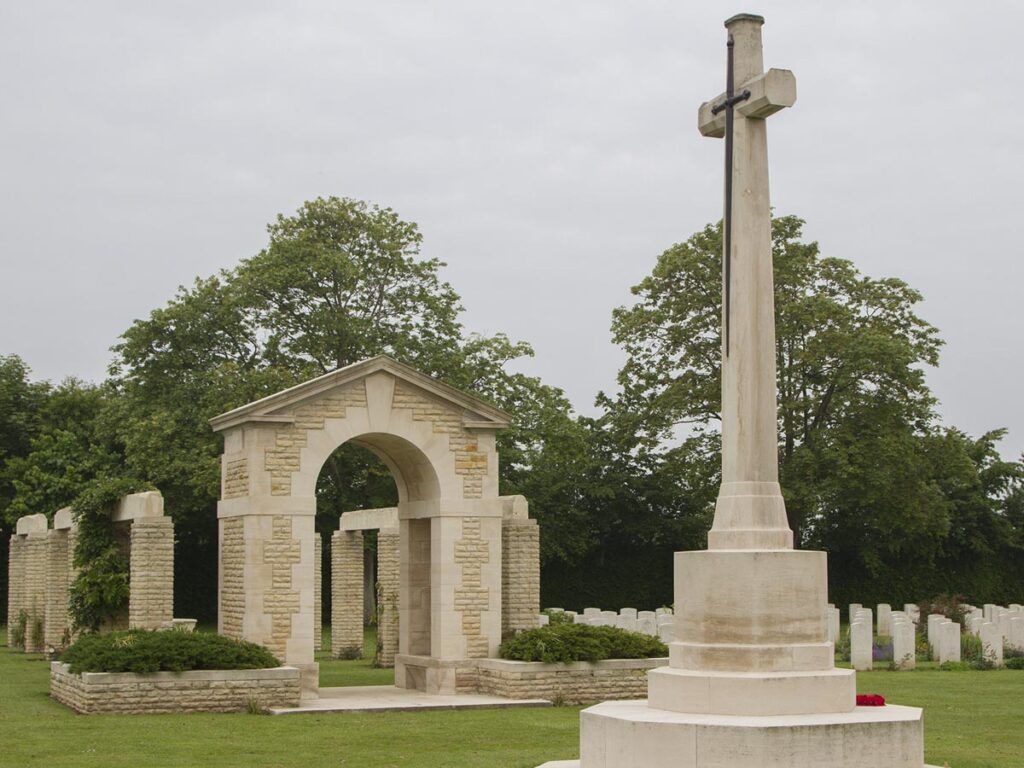
Tilly-sur-Seulles played a crucial role during the Second World War, particularly in the weeks following the Normandy Landings. This small Norman town became the site of intense fighting as Allied forces pushed inland from the beaches.
The Battle of Normandy
When you visit Tilly-sur-Seulles today, it’s hard to imagine the fierce battles that raged here in June 1944. After the D-Day landings on June 6, Allied forces began moving inland. The British 50th Infantry Division was tasked with capturing this strategic town.
What followed was nearly two weeks of brutal combat. The town changed hands several times as British forces clashed with the German Panzer Lehr Division, one of Germany’s elite armored units.
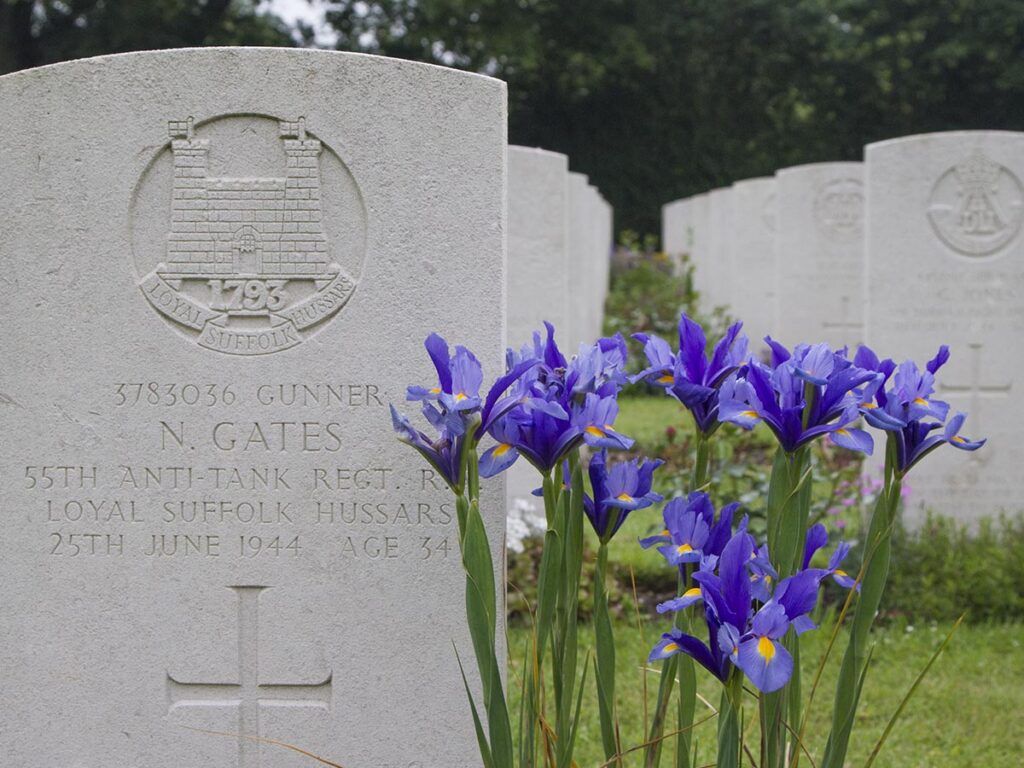
You can still see evidence of this struggle in the landscape. The battle for Tilly became a symbol of the difficult hedgerow fighting that characterized the Normandy campaign. The town wasn’t finally secured until June 18, after suffering almost complete destruction.
The Town During World War Two
Before the Allied offensive, Tilly-sur-Seulles was a peaceful Norman village. Its strategic location on the road between Bayeux and Caen made it an important target after D-Day.
During the fighting, almost 90% of the buildings in Tilly were destroyed. The civilian population suffered greatly, with many residents forced to flee their homes. Those who remained often sheltered in cellars for weeks.
German forces used the stone buildings and surrounding hedgerows as defensive positions. This made the town extremely difficult to capture.
After liberation, the townspeople gradually returned and rebuilt. Today’s Tilly-sur-Seulles is largely a post-war reconstruction. The war cemetery, containing 990 Commonwealth and 232 German graves, stands as a solemn reminder of the price paid for the town’s freedom.
The Graves
Tilly-sur-Seulles War Cemetery contains 1,222 carefully maintained graves from the Battle of Normandy. These solemn resting places represent the human cost of the fighting that took place in this area during the summer of 1944.
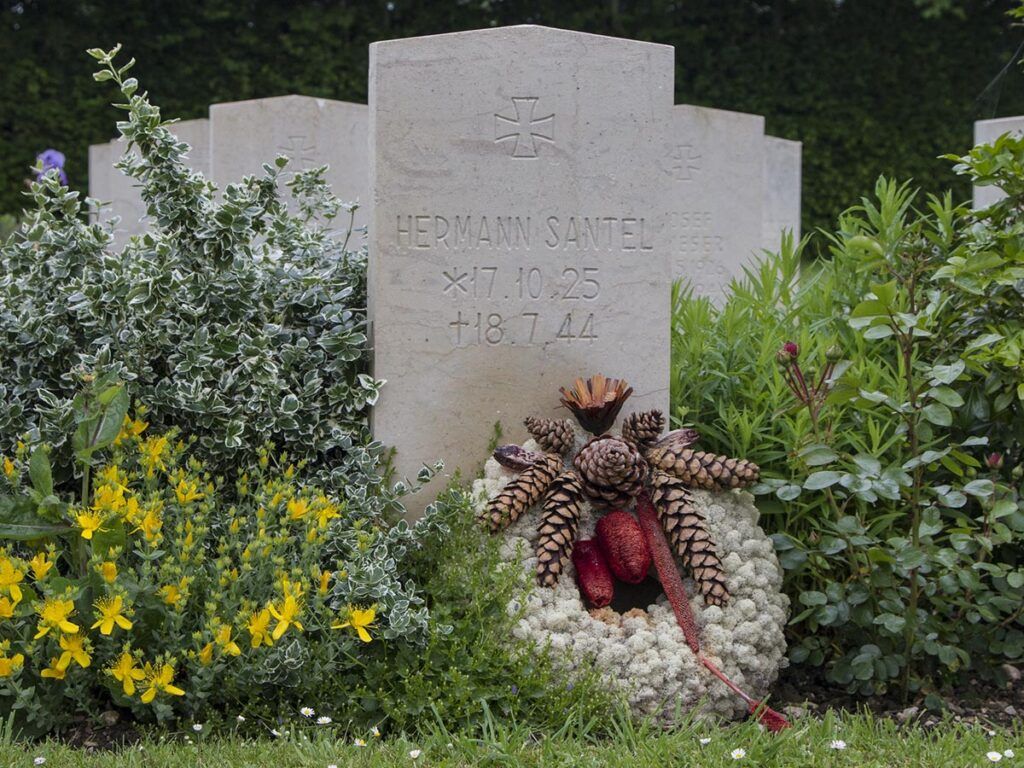
Commonwealth Burials
The cemetery predominantly holds Commonwealth war dead, with 986 British soldiers forming the majority. You’ll also find graves of service members from across the British Commonwealth. Among these are two New Zealanders, one Australian, and one Canadian soldier who fell during the Normandy campaign.
The Commonwealth graves follow the traditional design used by the Commonwealth War Graves Commission. Each headstone is uniform in size and shape, made of white Portland stone. The headstones stand in neat rows, creating a dignified and peaceful atmosphere.
When visiting, you might notice some headstones feature personal inscriptions chosen by families. These poignant messages offer glimpses into the lives and relationships of those who died far from home.
German Graves
A distinctive feature of Tilly-sur-Seulles is the presence of 232 German graves. This makes the cemetery somewhat unusual, as enemy combatants are often buried in separate locations.
The German graves differ visually from their Commonwealth counterparts. They’re marked with darker headstones that lie flat rather than standing upright. This creates a visual contrast within the cemetery.
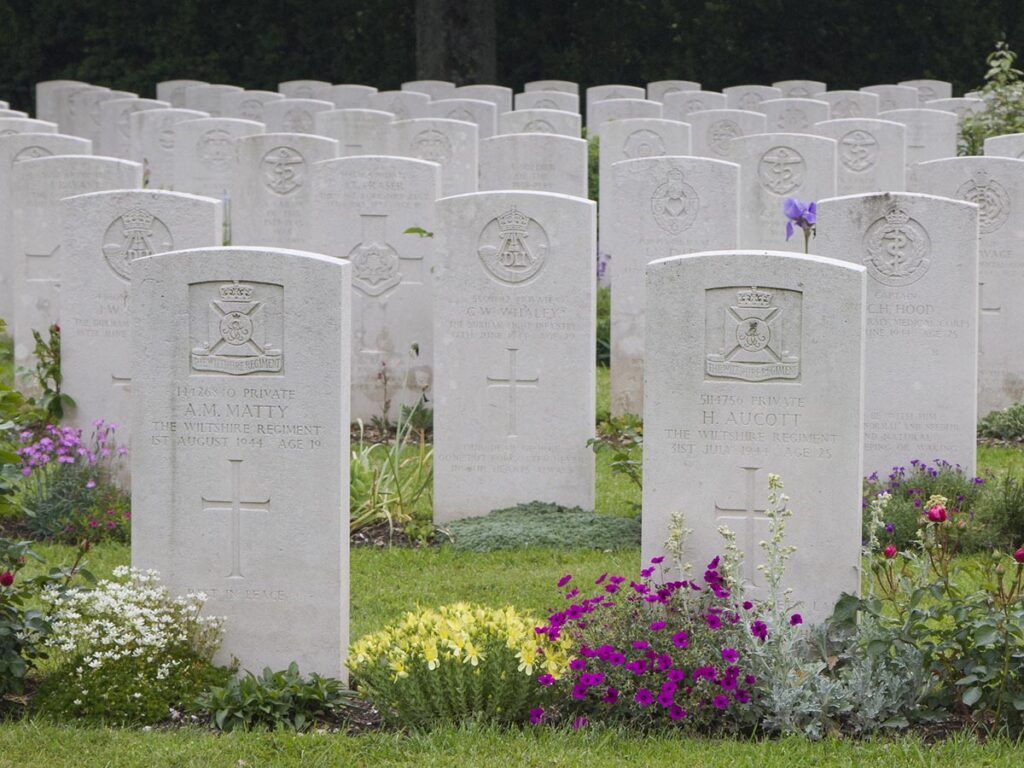
You’ll notice these graves are maintained with the same respect and care as the others. This reflects the modern commitment to honor all who died, regardless of which side they fought for.
Identified vs. Unidentified Casualties
Many graves at Tilly-sur-Seulles display the names, ranks, units, and dates of death for the fallen. These identified casualties allow visitors to connect with individual stories and recognize specific sacrifices.
Some headstones, however, bear the somber inscription “A Soldier of the 1939-1945 War – Known Unto God.” These mark the graves of unidentified service members whose remains couldn’t be matched to service records.
When you visit, take time to consider both types of graves. The identified remind us of individual lives lost, while the unidentified represent all who made the ultimate sacrifice. Together, they tell the complete story of war’s terrible cost.
Memorials and Commemorations
Tilly-sur-Seulles Cemetery offers visitors more than just gravesites. Special memorials honor those whose remains could not be found and tribute areas commemorate the specific military units who fought in this region.
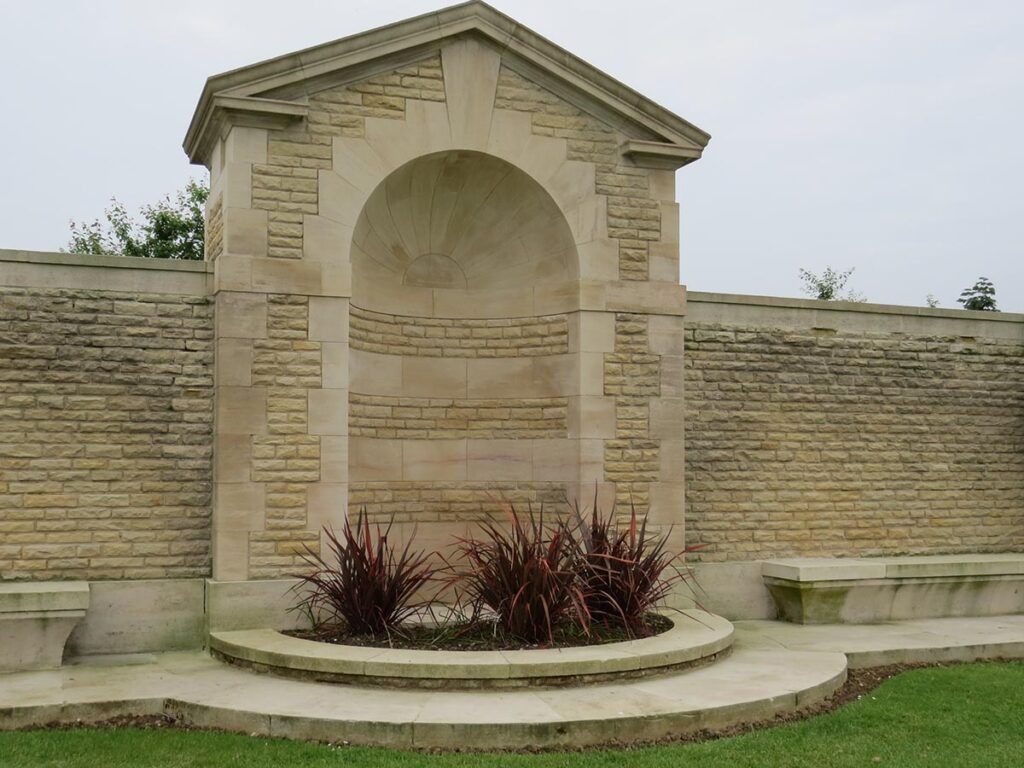
Tilly-sur-Seulles Memorial
Within the cemetery grounds, you’ll find a dedicated memorial that honors soldiers whose bodies were never recovered or identified. This simple yet dignified stone structure bears the names of those who made the ultimate sacrifice but have no known grave.
The memorial features inscriptions that read “Their Name Liveth For Evermore,” a phrase chosen by Rudyard Kipling for war memorials throughout Commonwealth cemeteries. As you walk around the memorial, take time to observe the names carefully.
Some soldiers commemorated here were initially buried in temporary gravesites that were later damaged during the continuing battles for Tilly. Others were reported killed but their bodies were never found in the chaos of war.
Canadian Air Force Tribute
A special area within the cemetery honors members of the Royal Canadian Air Force who died during operations supporting the ground troops in this region.
The Canadian Air Force tribute includes distinctive maple leaf emblems on the headstones of fallen Canadian airmen. These brave pilots flew dangerous missions over Norman countryside, providing crucial air support during the fierce fighting around Tilly-sur-Seulles.
You’ll notice some graves are grouped together – these often represent crew members from the same aircraft who died together when their planes were shot down.
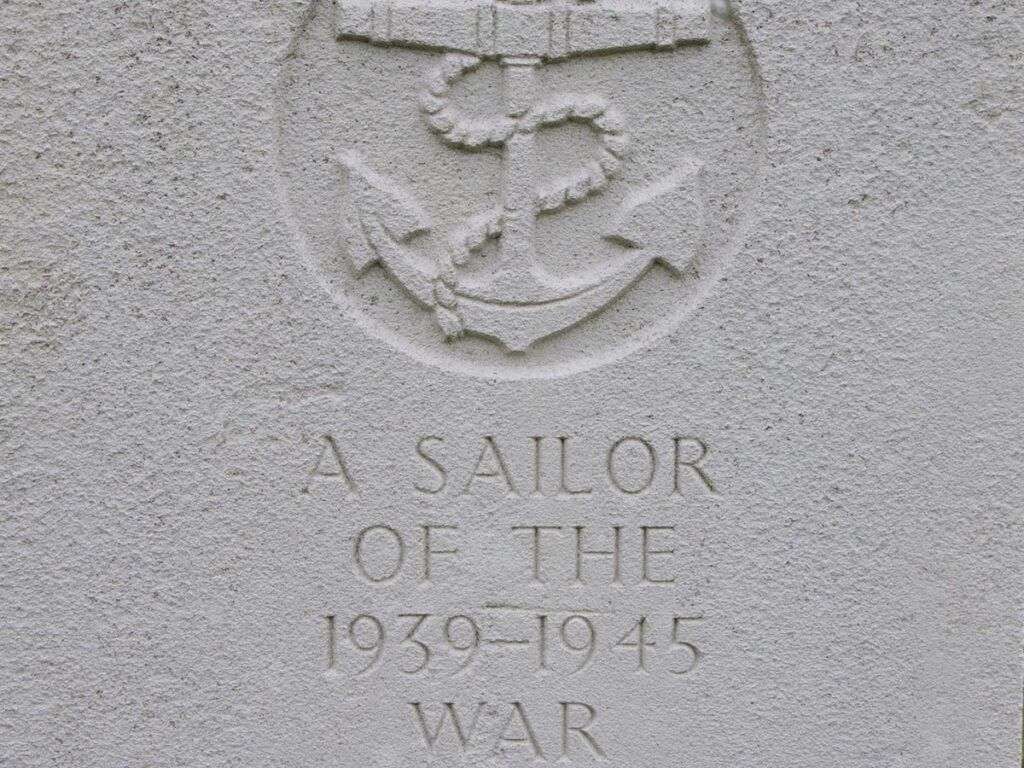
The tribute area includes information about specific missions flown by the RCAF in June 1944. Don’t miss the commemorative plaque that details the types of aircraft operated and the dangerous conditions these airmen faced while supporting Allied advances.
Visiting the Cemetery
Tilly-sur-Seulles is located in the Calvados region of Normandy, France. If you’re driving from Paris, take the A13 motorway toward Caen, which is about a 3-hour journey. From Caen, it’s just a 20-minute drive southwest.
Public transportation options are limited. Your best bet is to rent a car from major cities like Paris or Caen. Many D-Day tour companies also include this cemetery in their itineraries.
If you’re exploring multiple Normandy battle sites, consider basing yourself in Bayeux or Caen and making day trips to various locations. These cities offer regular train connections to Paris and other major French cities.
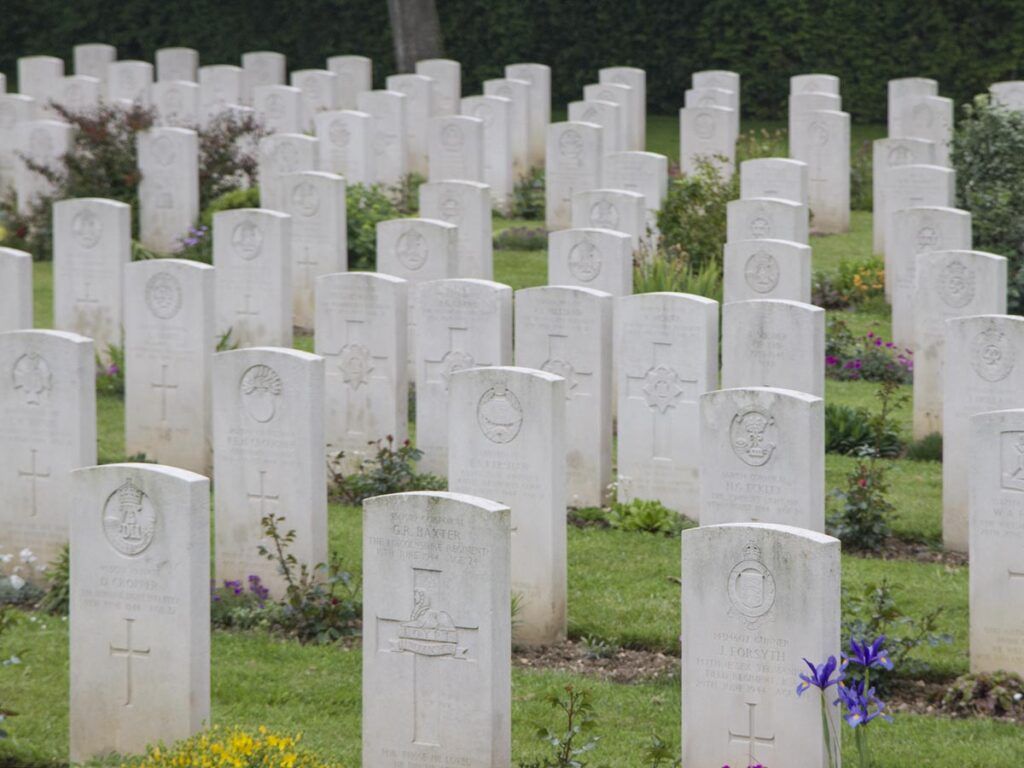
Location and Accessibility
The cemetery is situated about 1km west of Tilly-sur-Seulles town center on the D13 road. Look for the Commonwealth War Graves Commission signs that guide you to the entrance.
GPS coordinates: 49.1744° N, 0.6208° W
Parking is available at the cemetery, though the lot is not large. The site is wheelchair accessible with paved pathways between most grave sections. The grounds are relatively flat, making it easy for visitors with mobility concerns.
Entry to the cemetery is free and open to the public year-round. No tickets or reservations are needed.
Best Times to Visit
The cemetery is typically open daily from sunrise to sunset. Summer months (June-August) offer the best weather but can be busy, especially around D-Day anniversary events on June 6th.
Spring (April-May) brings beautiful blooming flowers to the cemetery grounds. The weather is usually mild, and crowds are smaller than summer.
Fall (September-October) offers cooler temperatures and changing colors in surrounding trees. Winter visits (November-February) can be cold and sometimes rainy, but provide a uniquely reflective experience with very few other visitors.
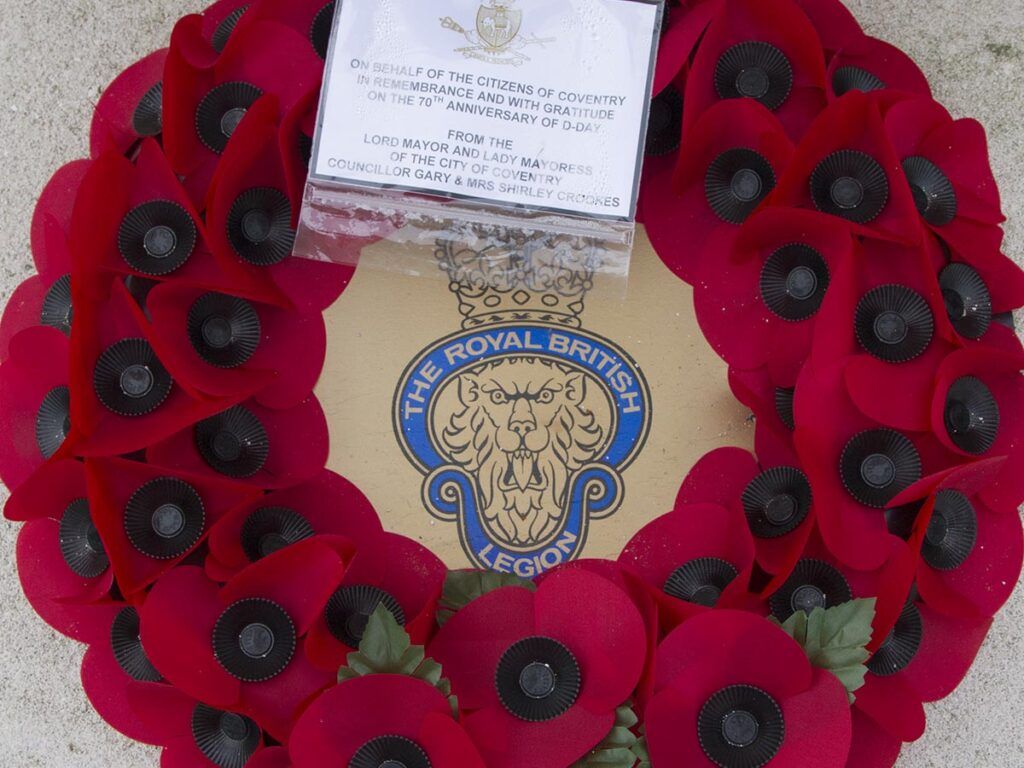
Consider visiting early in the morning for the most peaceful experience. The light at dawn across the headstones creates a particularly moving atmosphere.
Visitor Amenities
The cemetery features basic amenities to make your visit comfortable. Near the entrance, you’ll find visitor information panels explaining the historical significance of the site and the Battle of Normandy.
A registry book is available where you can leave comments or reflections on your visit. Cemetery staff occasionally provide assistance and can answer questions about specific graves or the history of the site.
Public restrooms are available but basic. There are no cafés or restaurants on-site, so bring water and snacks if needed.
Free Wi-Fi is not available, so download any digital guides or maps before your visit. The Commonwealth War Graves Commission offers a free app with information about their cemeteries that you might find useful.
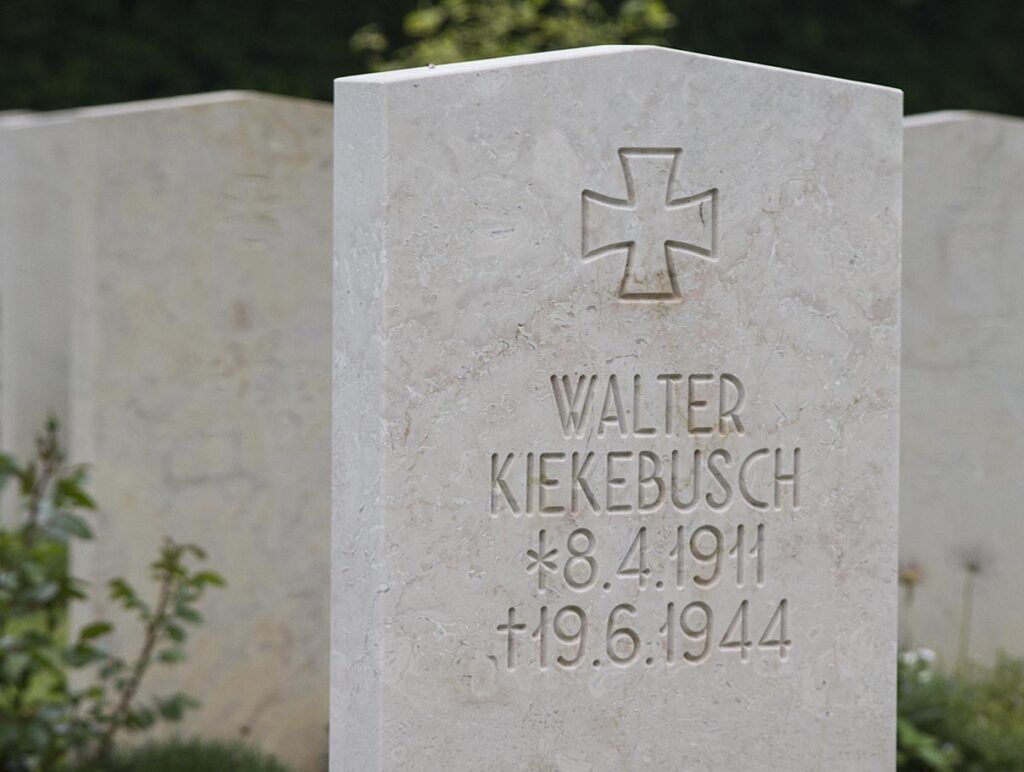
Accommodation Options
While Tilly-sur-Seulles itself is small with limited lodging options, several nearby towns offer excellent places to stay.
Bayeux (15km away) is the most popular base for D-Day tourism with numerous hotels, B&Bs, and restaurants. The charming medieval town also houses the famous Bayeux Tapestry.
Recommended Bayeux Hotels:
Caen (20km away) offers more urban accommodations and serves as a transportation hub for the region. The Memorial de Caen museum provides valuable context for understanding the Battle of Normandy.
Recommended Hotels in Caen:
- Hôtel des Quatrans
- Best Western Plus Le Moderne
- Mercure Caen Centre Port de Plaisance
- Ibis Styles Caen Centre Gare
- Hôtel Restaurant Ivan Vautier
For a rural experience, look for farmhouse B&Bs (chambres d’hôtes) in the surrounding countryside. These often provide a more authentic Norman experience with home-cooked meals.
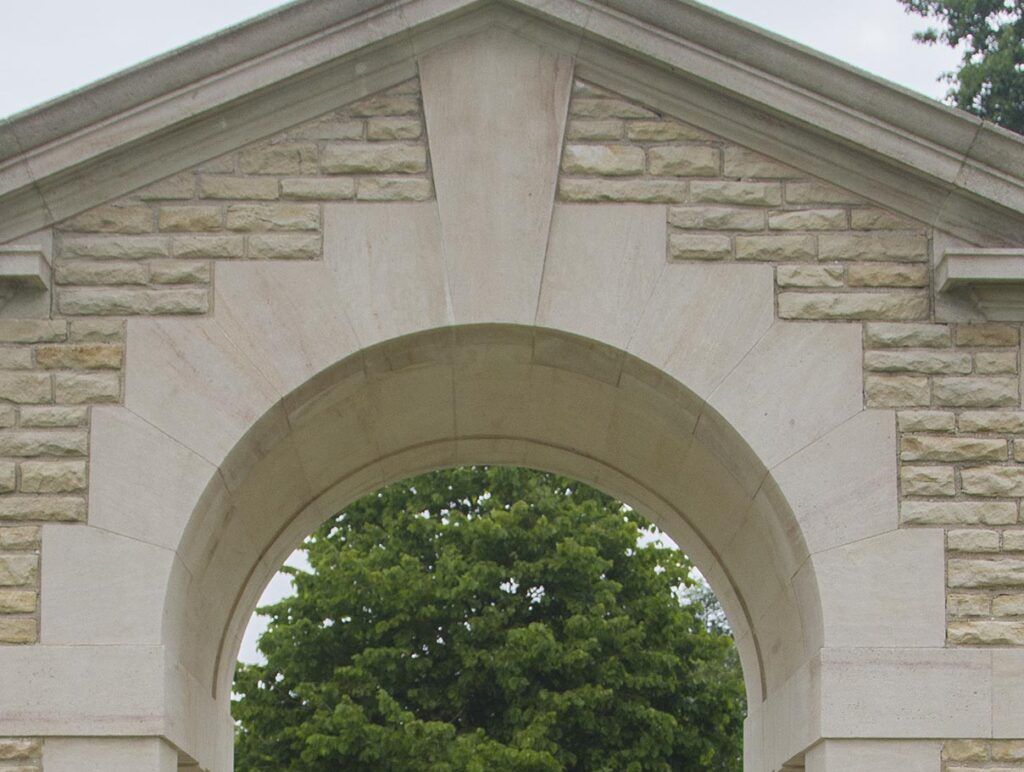
Tours
Several tour companies offer guided visits to Normandy’s war cemeteries and battlefields. These range from half-day excursions to multi-day comprehensive tours.
Small group tours usually provide the most personalized experience. Guides often share soldiers’ personal stories, bringing history to life as you walk among the graves.
If you prefer independence, self-guided tours are easy to arrange. The Commonwealth War Graves Commission website offers excellent resources for planning your visit, including historical context and notable burials.
Military history enthusiasts might consider specialized battlefield tours that focus on specific units or operations in the Tilly-sur-Seulles area, which saw fierce fighting in June 1944.
Recommended D-Day Tours from Paris:
- From Paris: Normandy D-Day Beaches Day Trip
- From Paris: 2-Day Normandy & Brittany Tour
- Normandy American D-Day Experience (From Bayeux Station)
Recommended D-Day Tours from Bayeux:
- From Bayeux: American D-Day Sites in Normandy Full-Day Tour
- From Bayeux: American D-Day Sites in Normandy Half-Day Tour
- From Bayeux: Half-Day Normandy WWII Sidecar Tour
- Full-Day US Battlefields of Normandy Tour from Bayeux
Recommended Private D-Day Tours:
- From Paris: Normandy D-Day Landing Beaches Full-Day Tour
- From Rouen: Normandy D-Day Beaches Private Full-Day Tour
- Private Tour: Rouen, Bayeux, and Falaise Day Trip from Bayeux
- Normandy WWII Private Half-day Sidecar Tour From Bayeux
Recommended Band of Brothers Tours:
Consider combining your cemetery visit with other nearby sites like Bayeux War Cemetery or the German Cemetery at La Cambe for a more complete understanding of the war’s impact.
Nearby Attractions
While visiting Tilly-sur-Seulles War Cemetery, you’ll find several fascinating attractions within easy driving distance. The area surrounding Tilly-sur-Seulles offers a rich tapestry of World War II history, cultural landmarks, and scenic landscapes that complement your cemetery visit.
Museums and Historical Sites
Just a short drive from Tilly-sur-Seulles, you’ll discover several important museums and memorials that help tell the story of the Battle of Normandy. The Normandy American Cemetery, though not immediately adjacent, is a profoundly moving site where over 9,000 American soldiers rest.
La Cambe German War Cemetery provides a somber contrast, with its dark stone markers commemorating German soldiers. This site offers a different perspective on the war’s human cost.
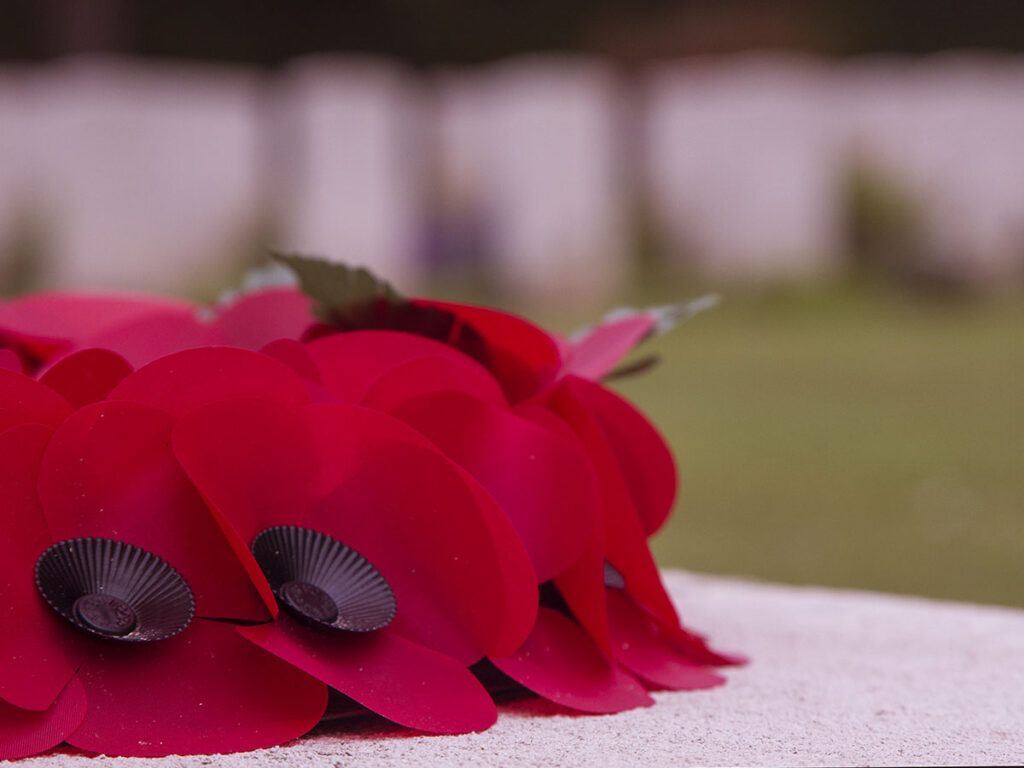
The Commonwealth War Cemetery at Hottot-les-Bagues is closer to Tilly and continues the story of the Allied push inland. Here, much like at Tilly, you’ll find meticulously maintained graves of soldiers who fought in the region.
Bayeux and Its Surroundings
Bayeux, just 15 minutes away, deserves at least half a day of your time. This charming medieval town miraculously survived WWII intact. The Bayeux War Cemetery, the largest British WWII cemetery in France, is located here with over 4,500 graves.
Don’t miss the Bayeux Tapestry Museum, housing the famous 11th-century embroidery that tells the story of William the Conqueror’s invasion of England. It’s a remarkable contrast to the more recent history you’ll find elsewhere.
The Bayeux Cathedral, with its Gothic architecture, offers a peaceful respite from war memorials. The town’s narrow streets, lined with half-timbered buildings, invite leisurely exploration and cafe stops.
Gold Beach Exploration
Just 20 minutes south of Tilly-sur-Seulles, you can stand on Gold Beach, one of the five D-Day landing beaches. This stretch of coastline saw British forces come ashore on June 6, 1944.
Visit the America Gold Beach Museum in Vers-sur-Mer to understand the strategic importance of this landing zone. The museum’s exhibits include personal stories and artifacts from D-Day operations.
Take time to walk along the shoreline where history was made. The contrast between today’s peaceful beach and the chaos of June 1944 is striking.
Nearby Arromanches offers the remains of the artificial Mulberry Harbor, visible at low tide. The 360° Cinema there provides an immersive experience of the Allied landings through archival footage.
Why It’s Worth Visiting
Tilly-sur-Seulles War Cemetery offers a profound experience for anyone interested in World War II history. This beautifully maintained cemetery holds 1,222 graves in total – 990 Commonwealth soldiers and 232 German troops who lost their lives during the Battle of Normandy.
When you visit, you’ll be struck by the peaceful atmosphere and meticulous care given to each grave. The rows of headstones tell stories of sacrifice that span nationalities, with British, New Zealand, Australian, and Canadian soldiers resting here.
The cemetery’s location just 1km west of Tilly-sur-Seulles on the D13 road makes it easily accessible during your Normandy travels. You can combine this visit with other nearby D-Day sites for a comprehensive understanding of the region’s wartime significance.
Unlike some larger war cemeteries, Tilly-sur-Seulles offers a more intimate setting for reflection. The presence of both Allied and German graves provides a poignant reminder of the human cost on all sides of the conflict.
For history enthusiasts and those tracing family connections to the war, the cemetery provides important context about the fierce fighting that occurred inland from the famous landing beaches.

